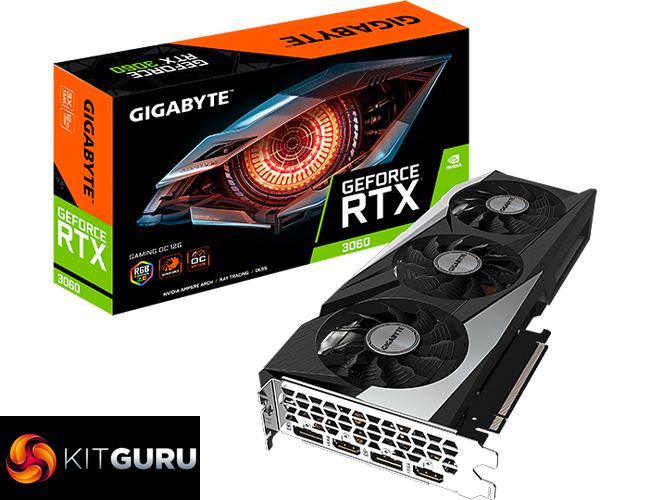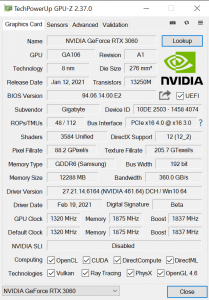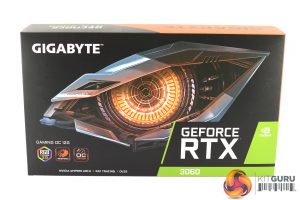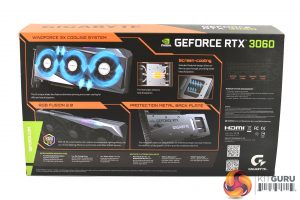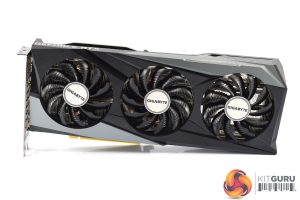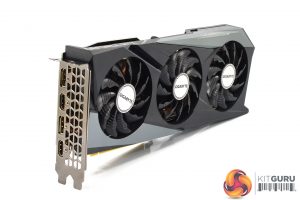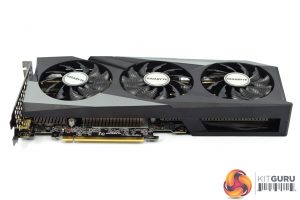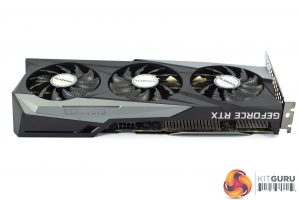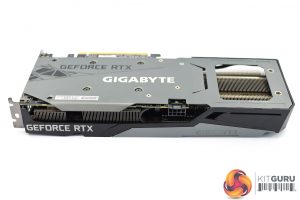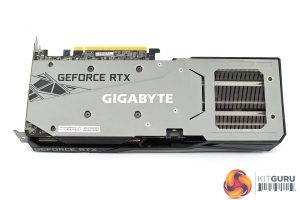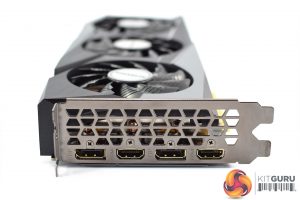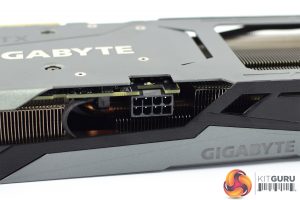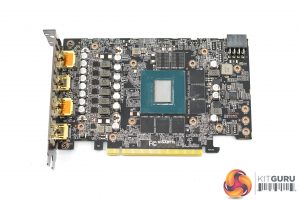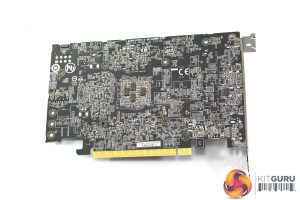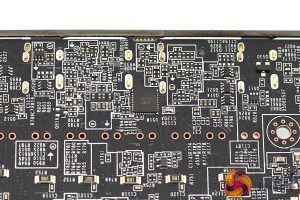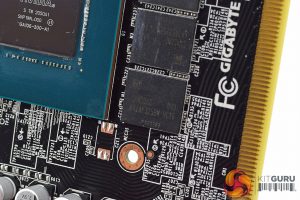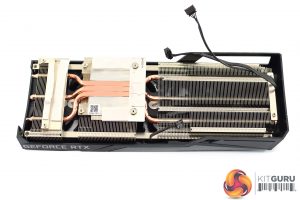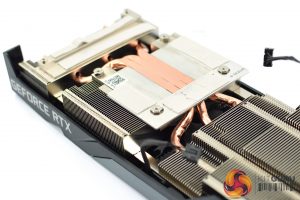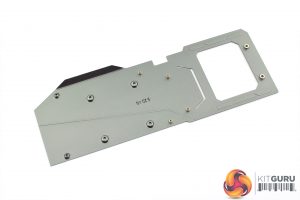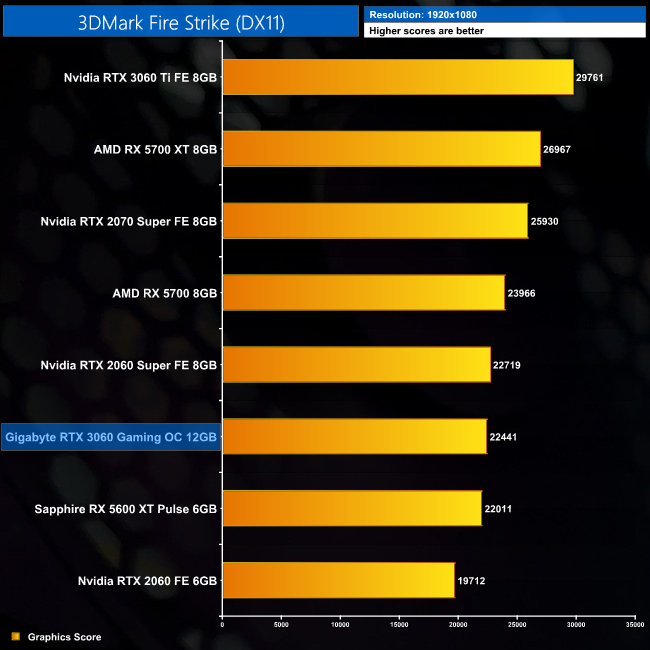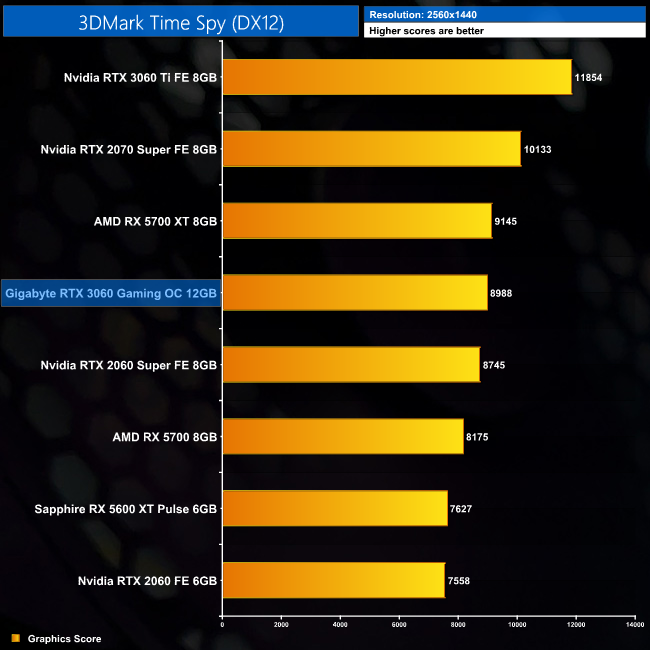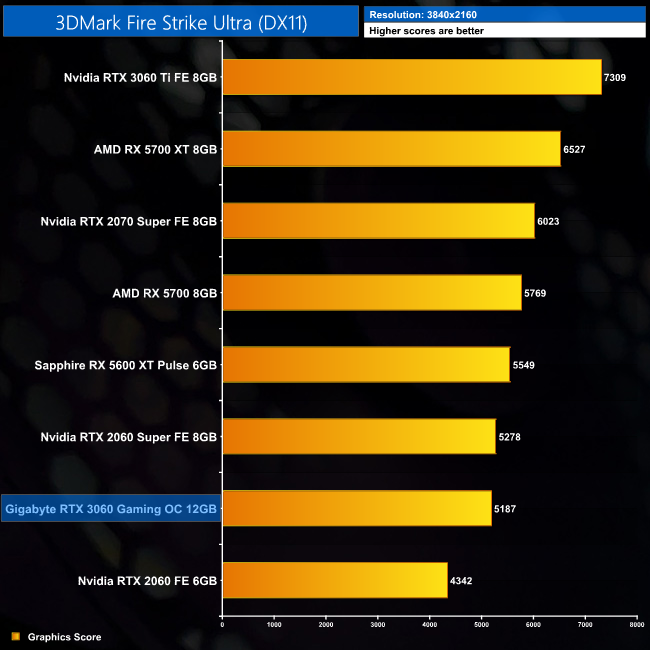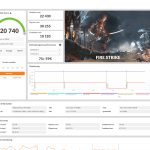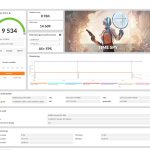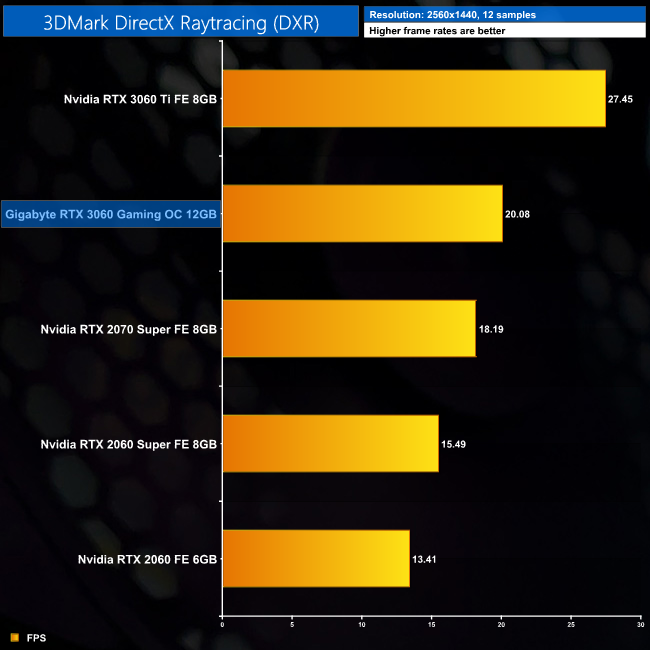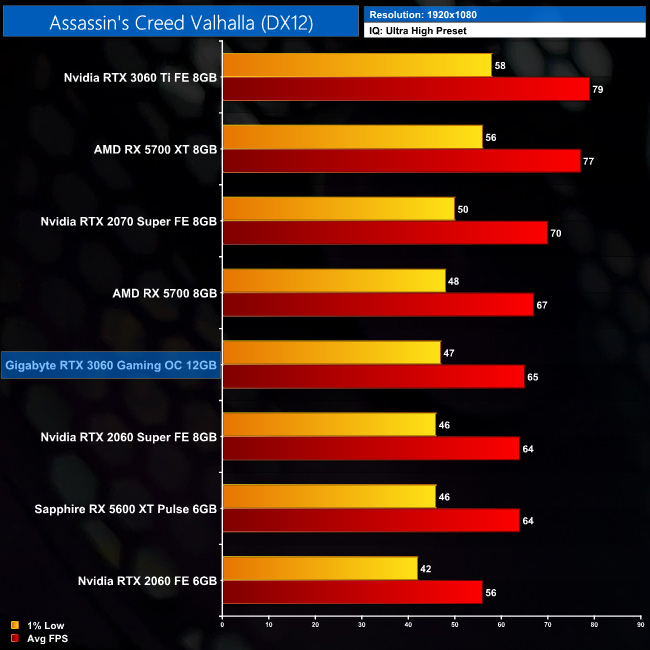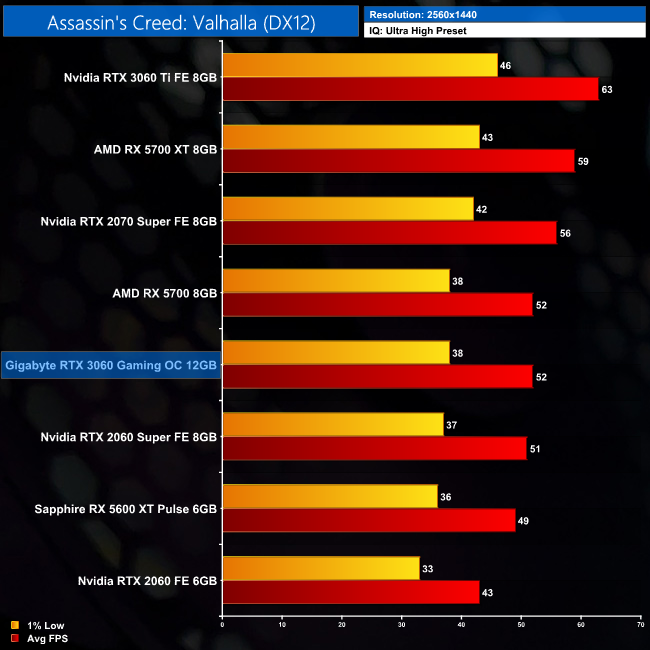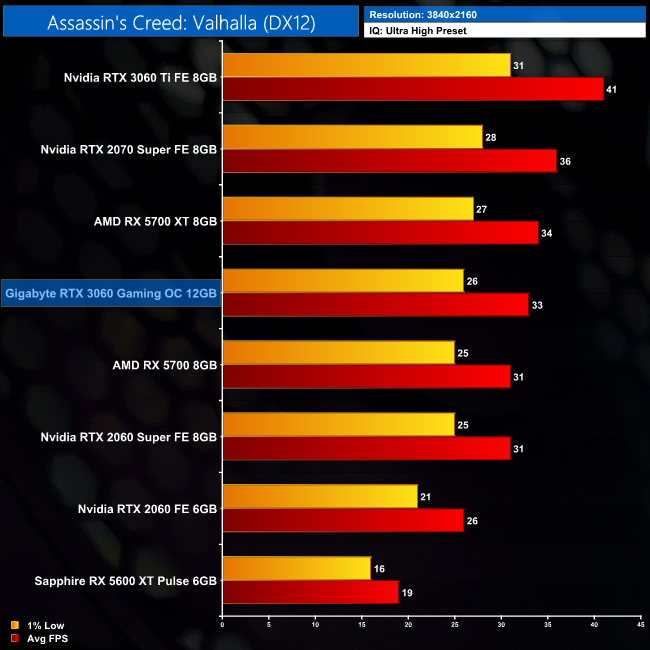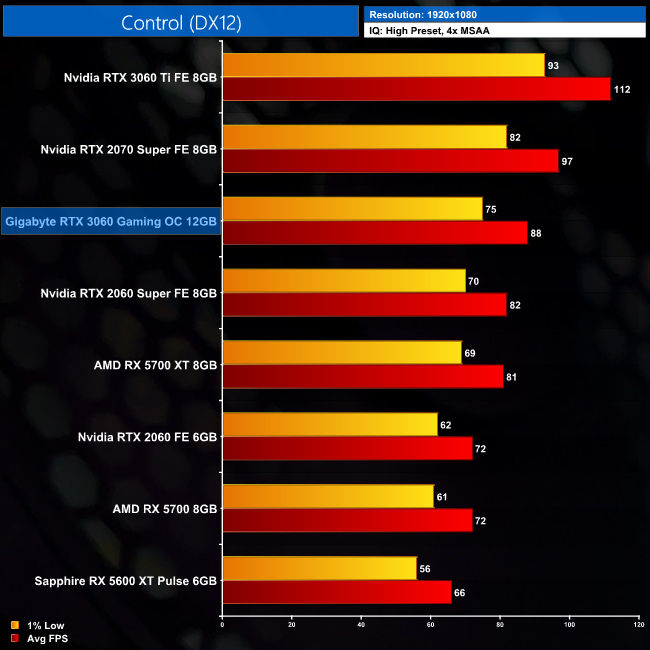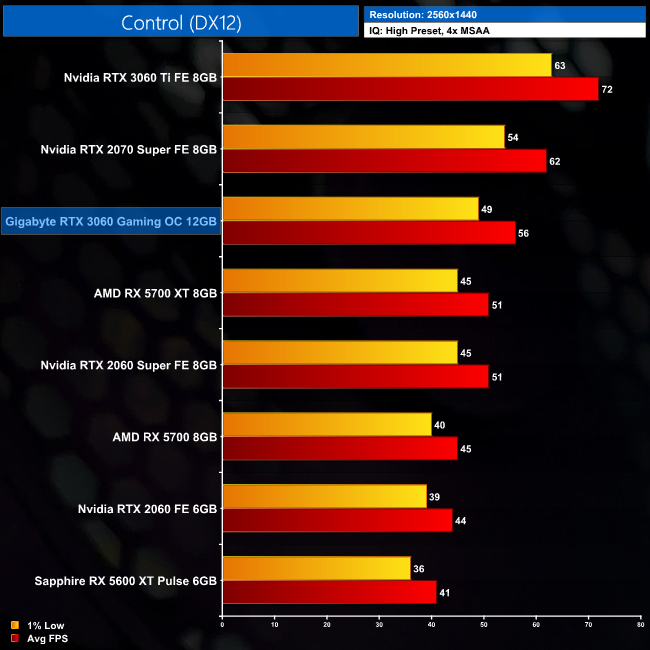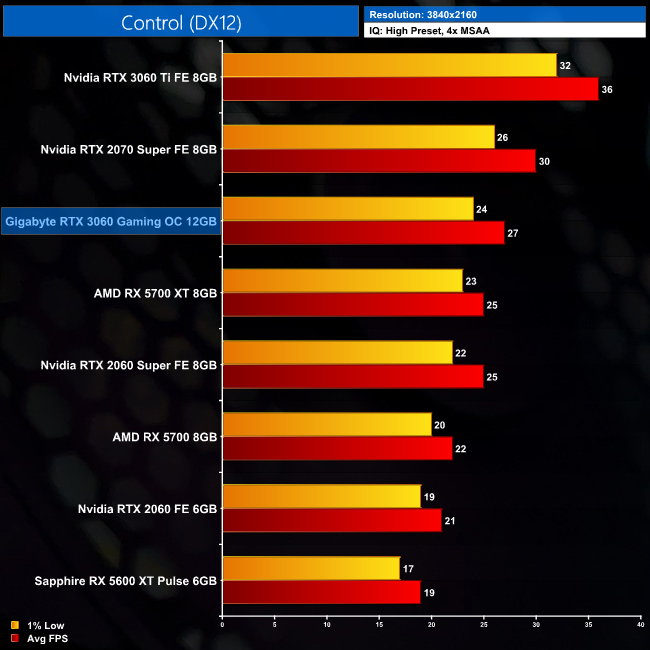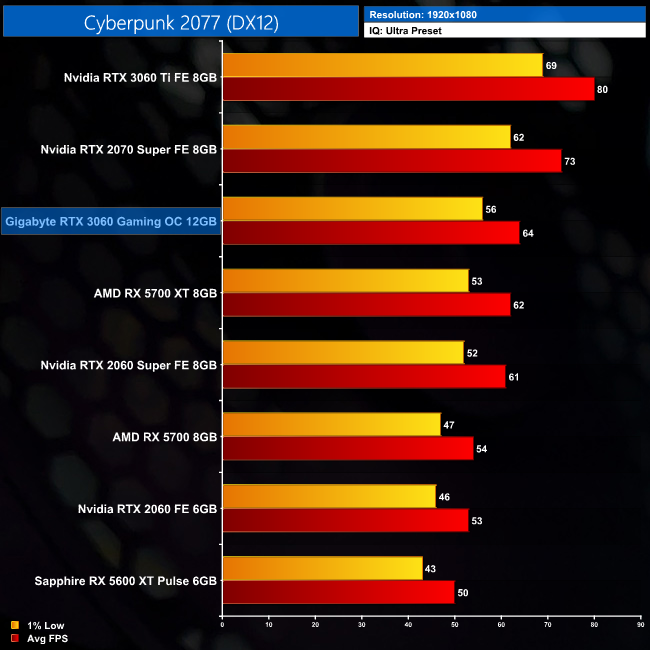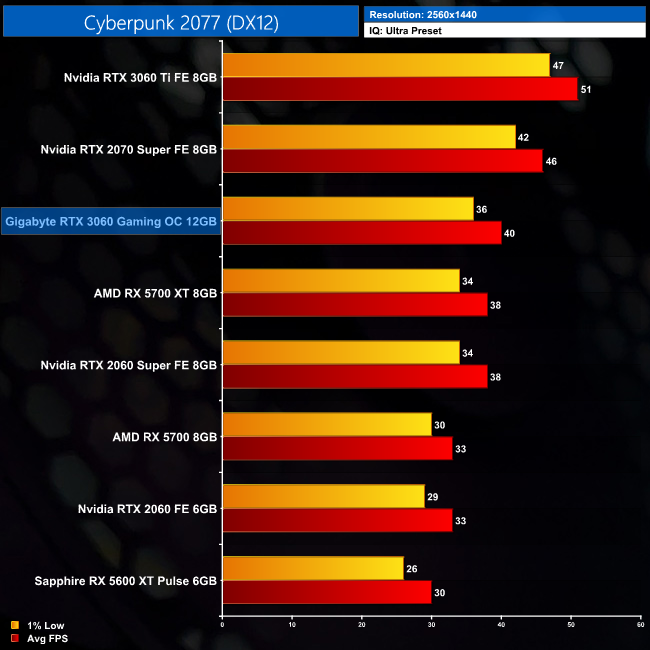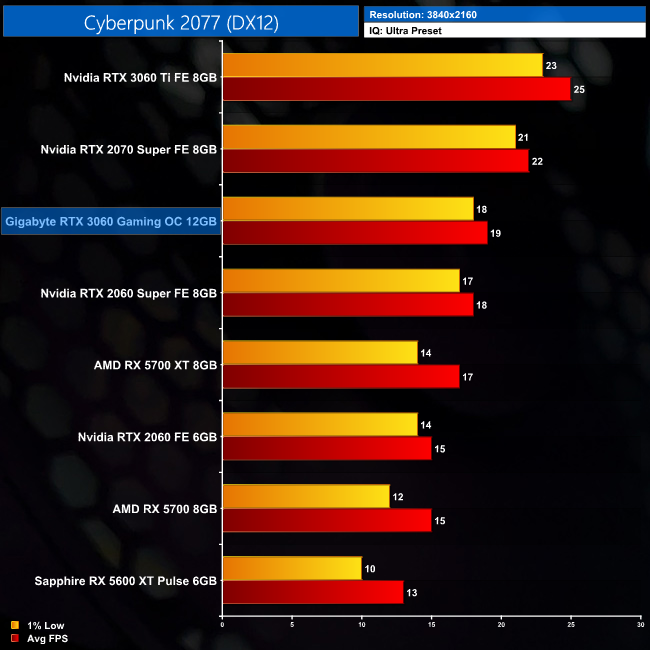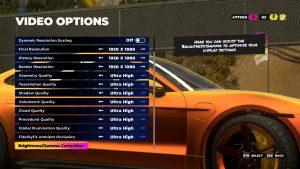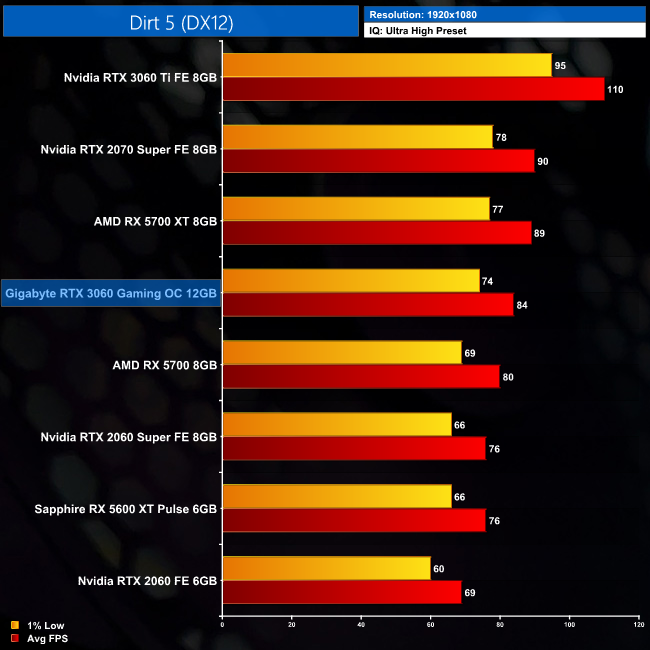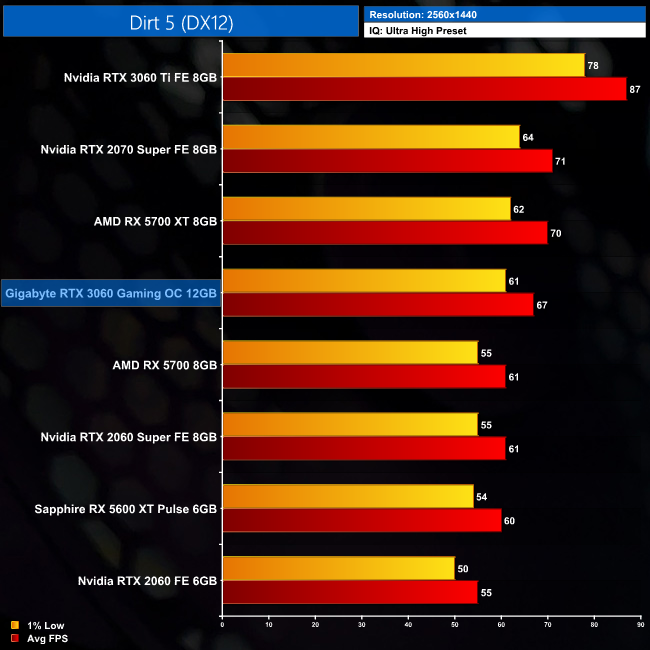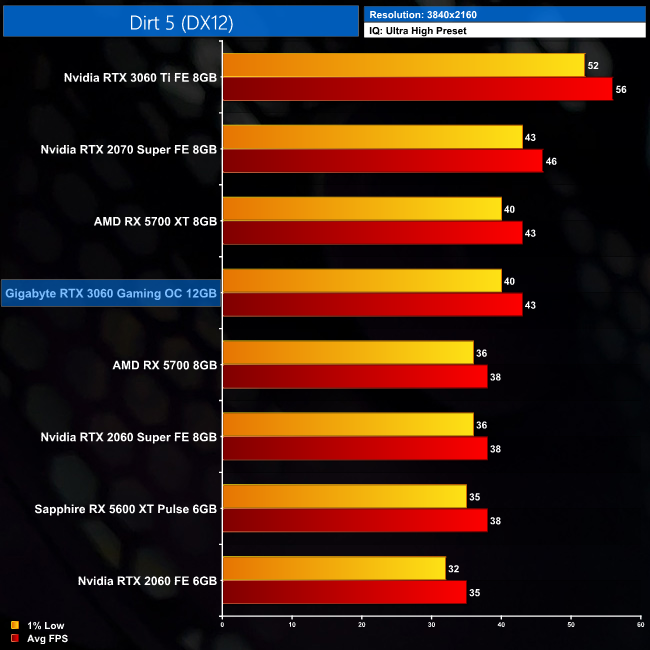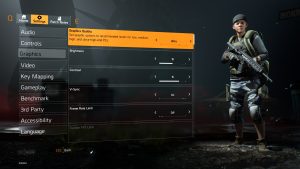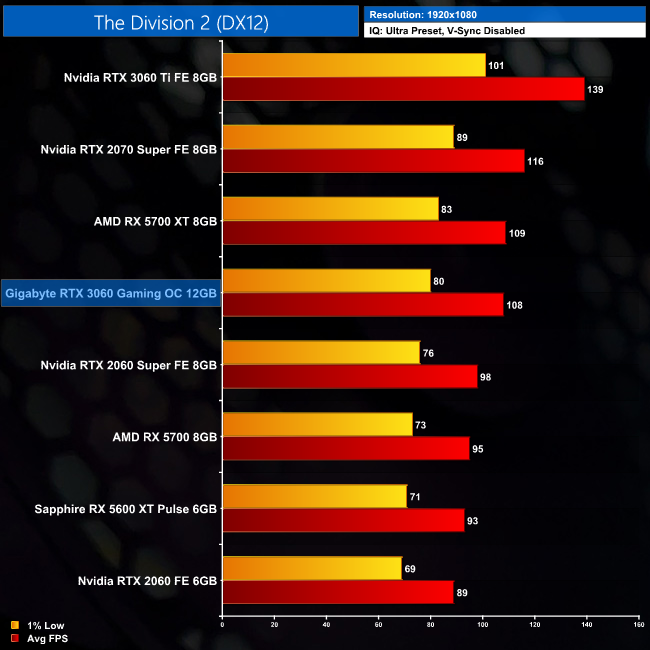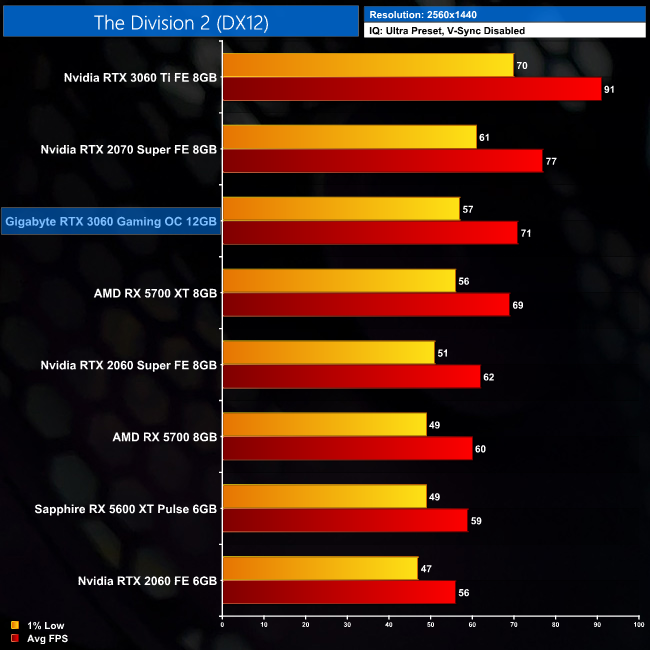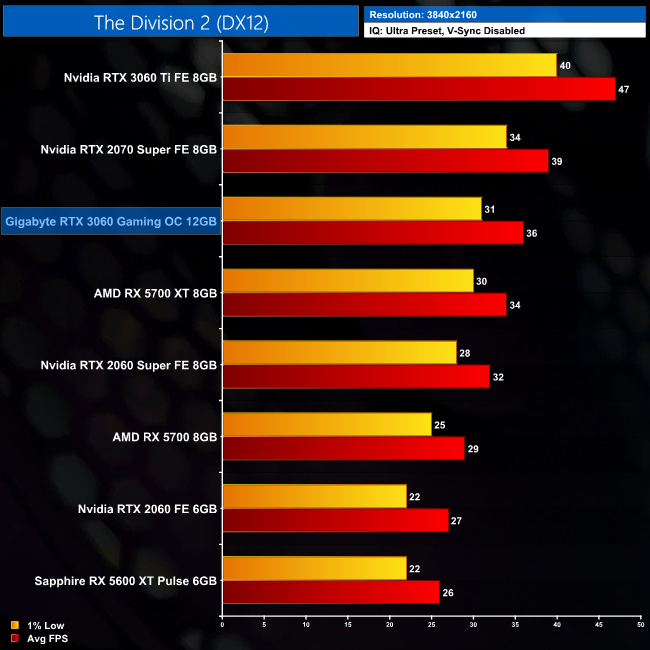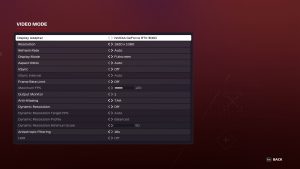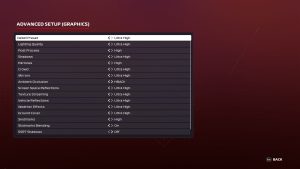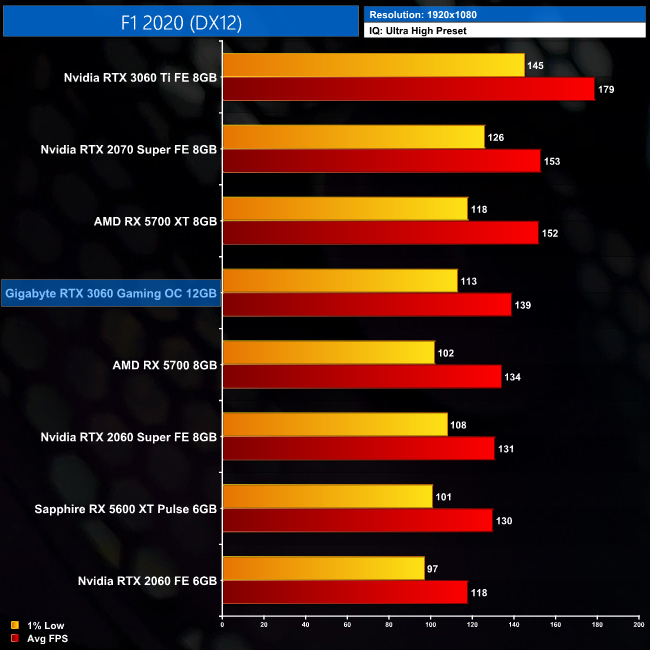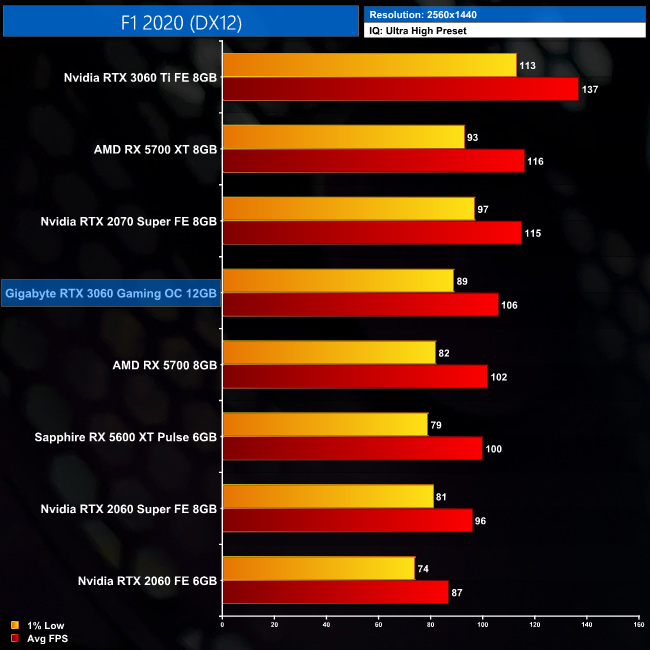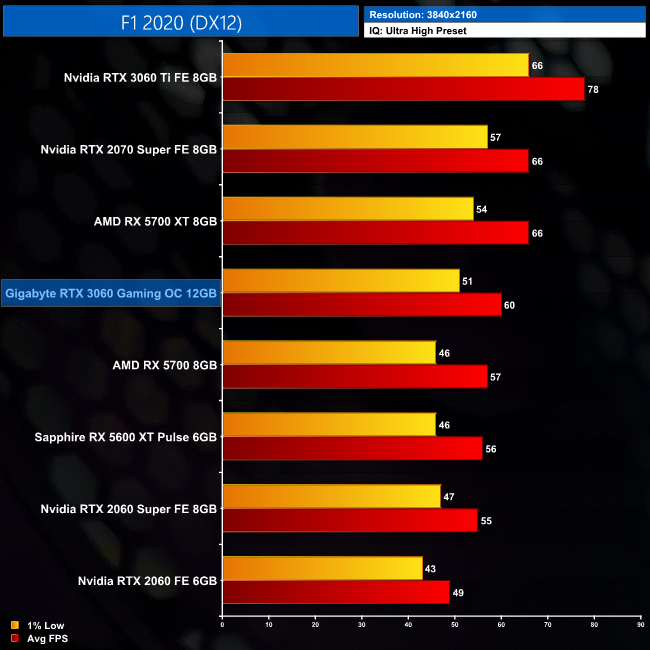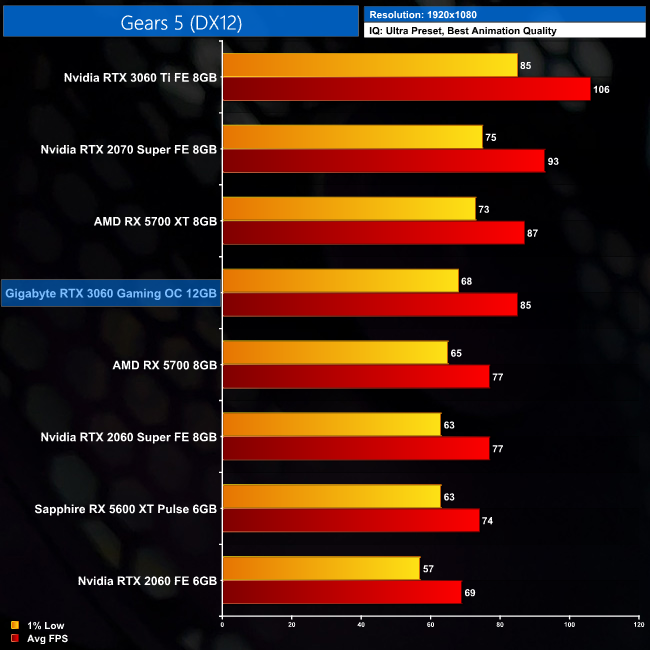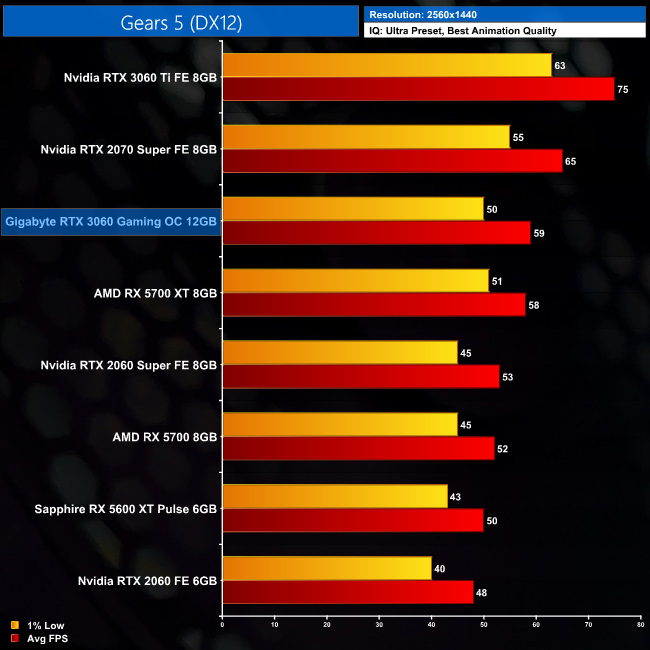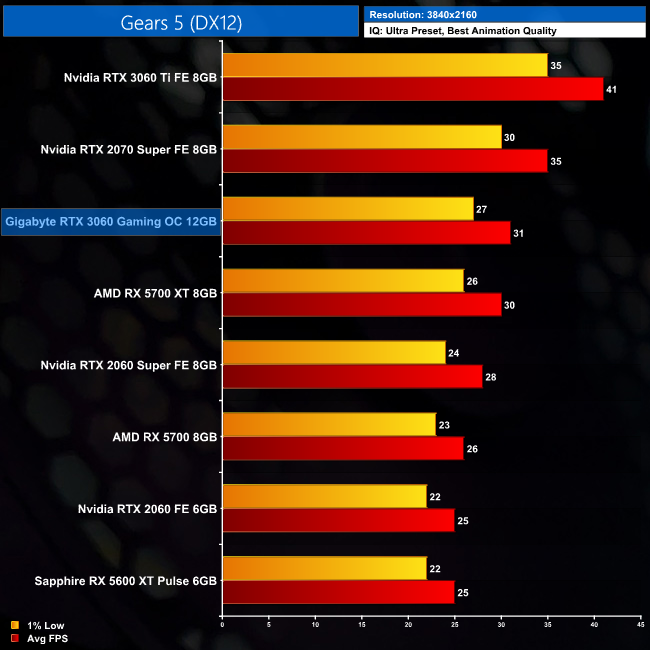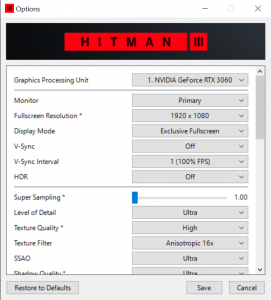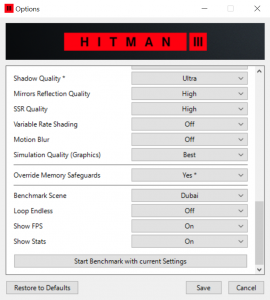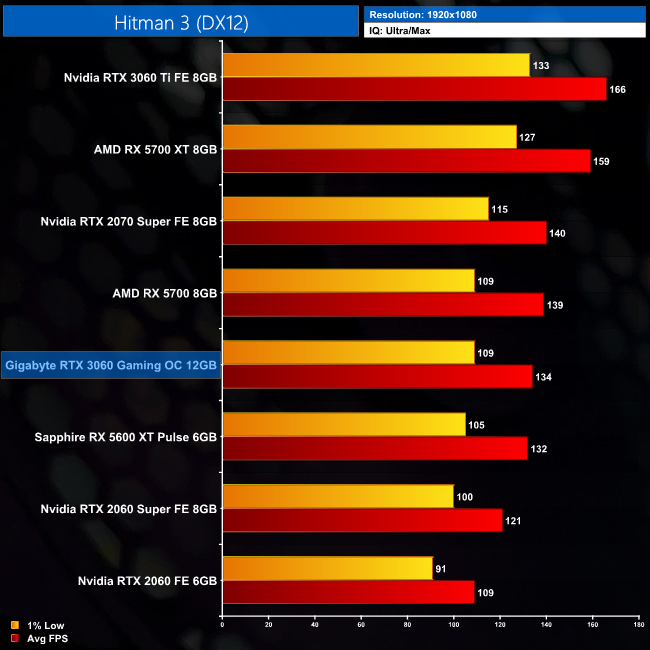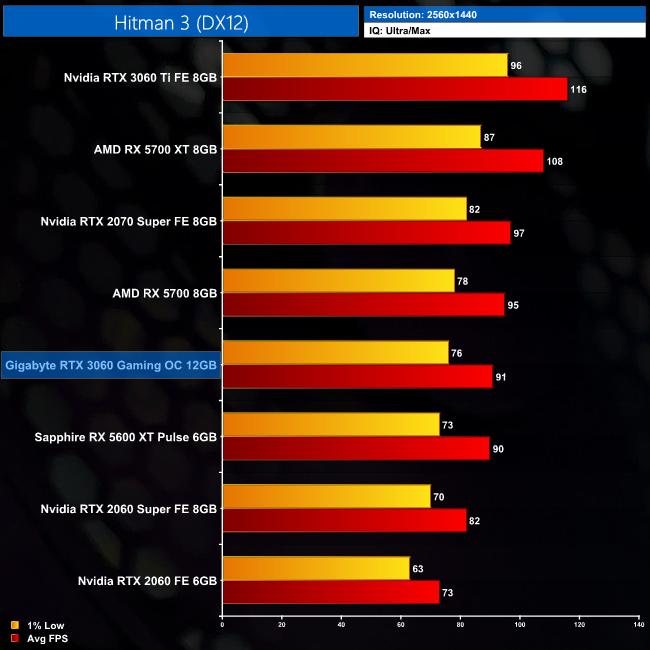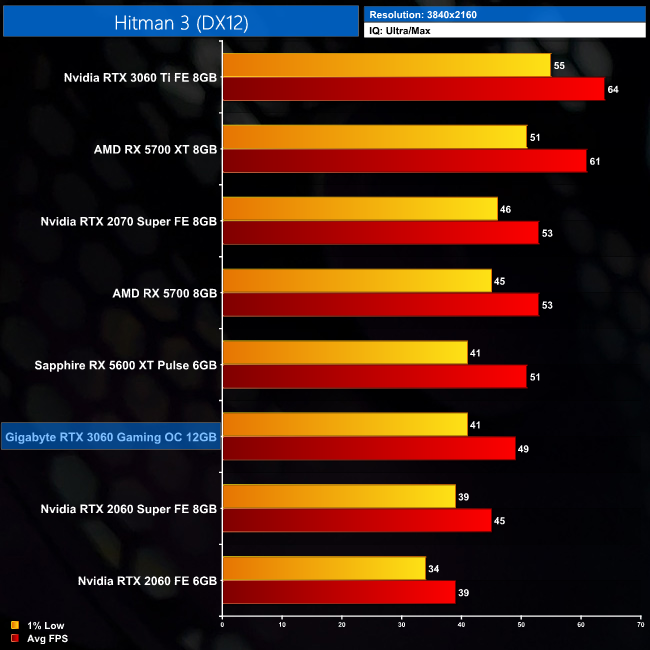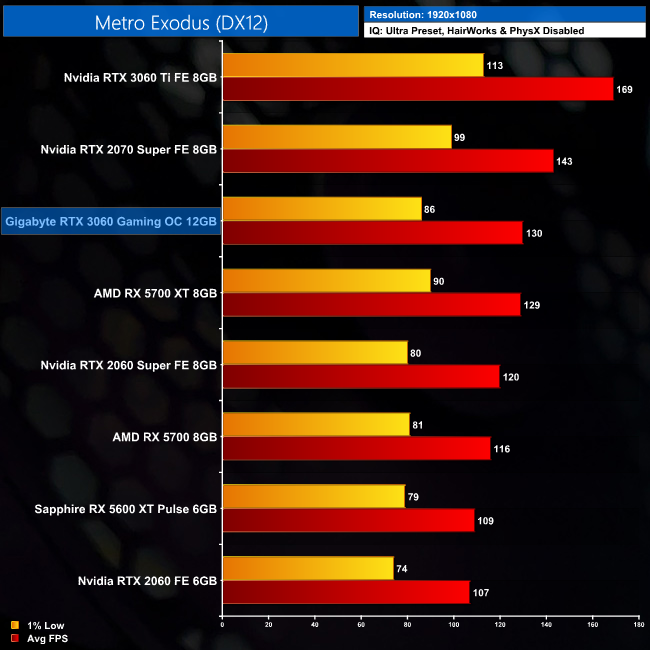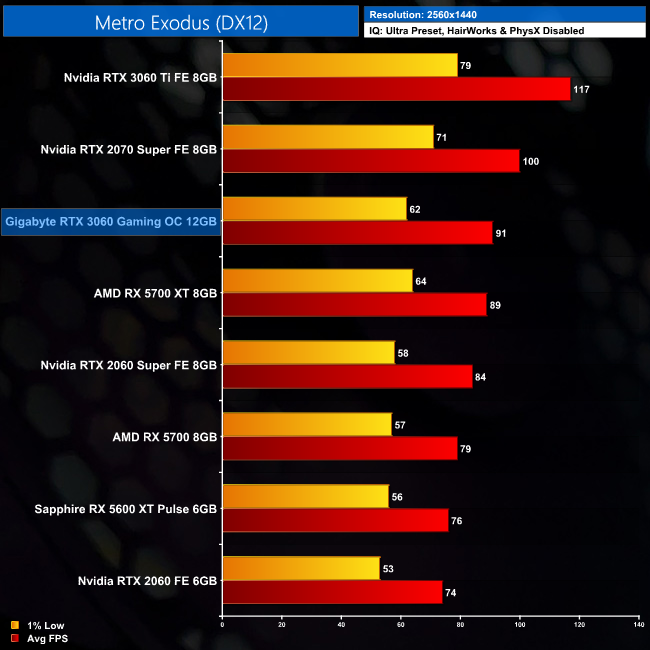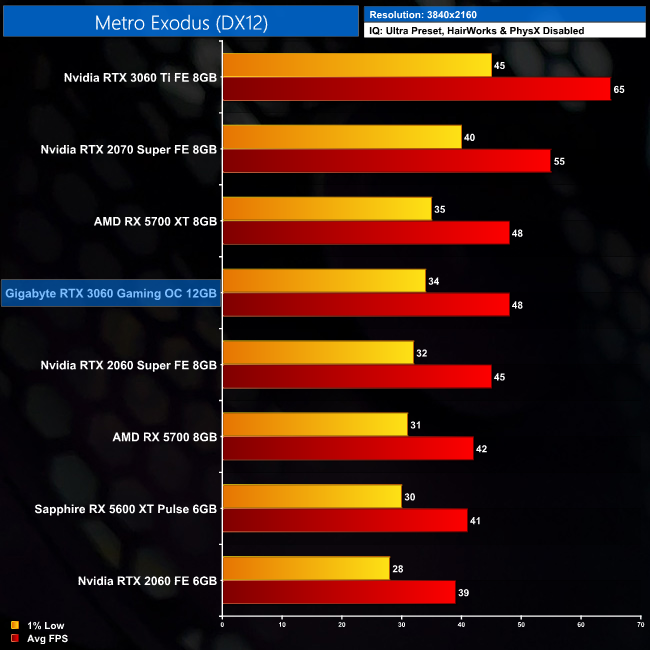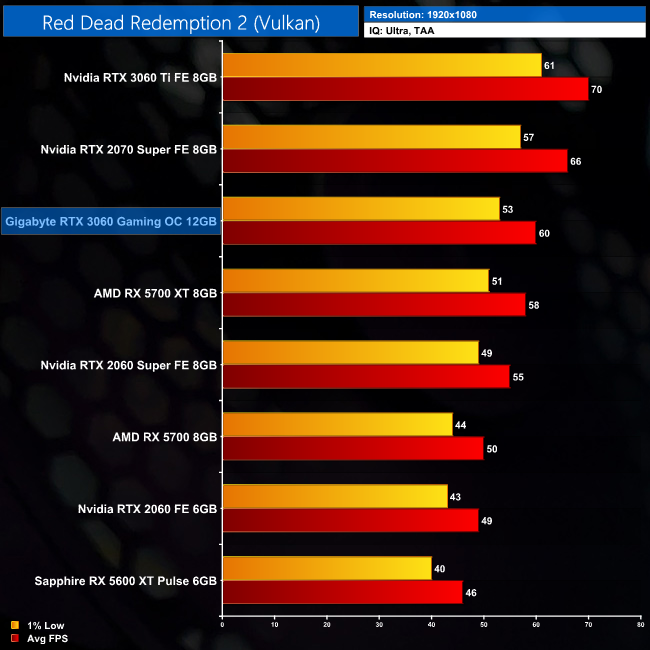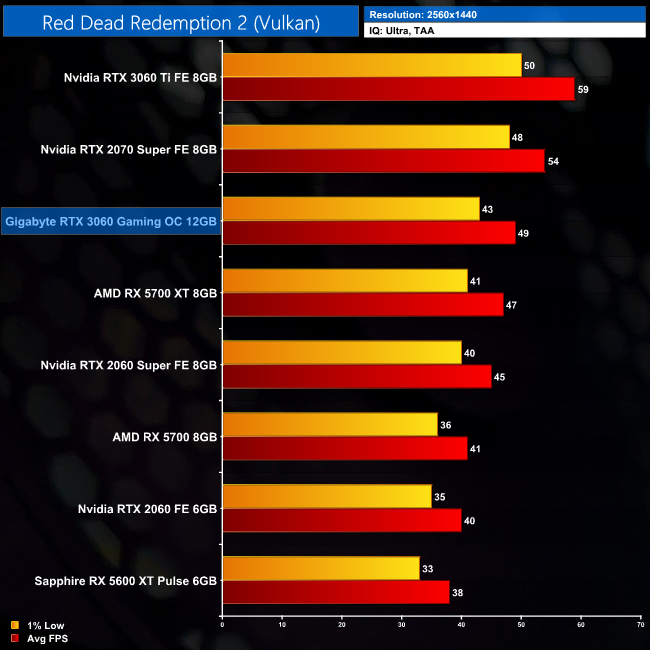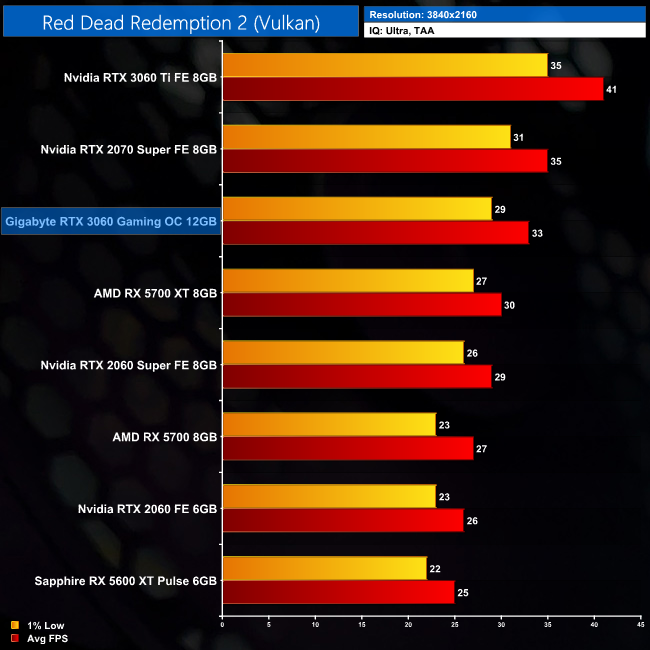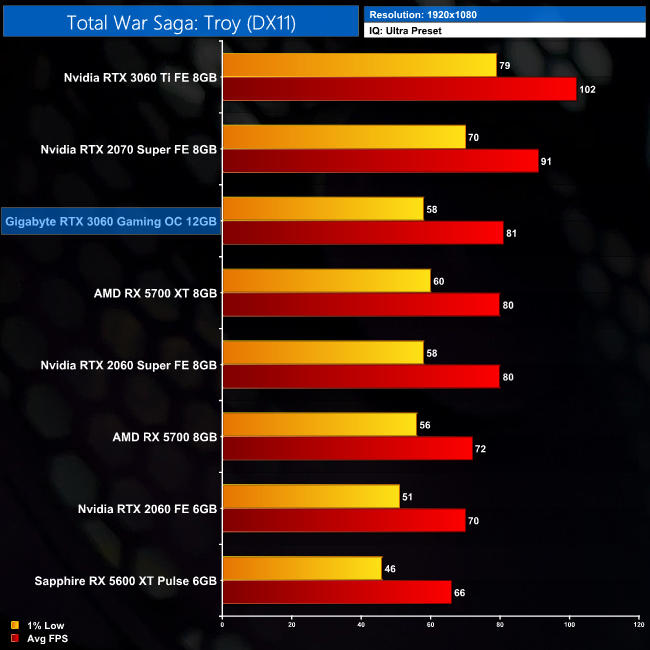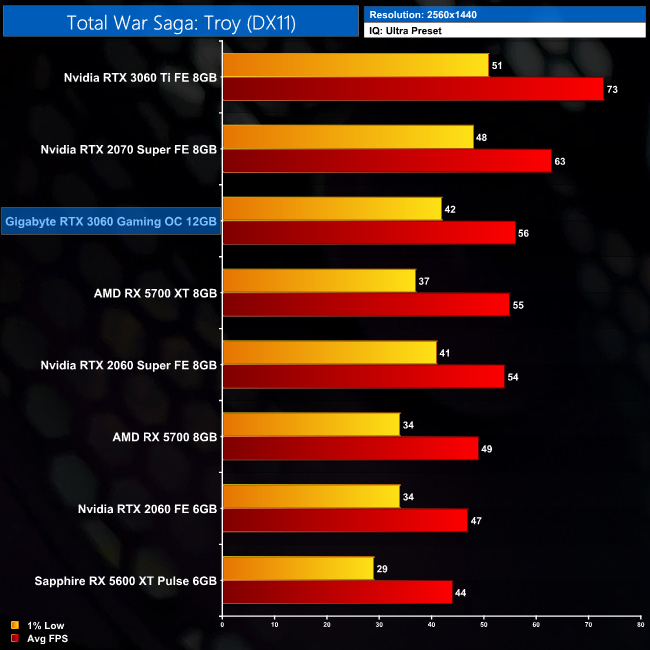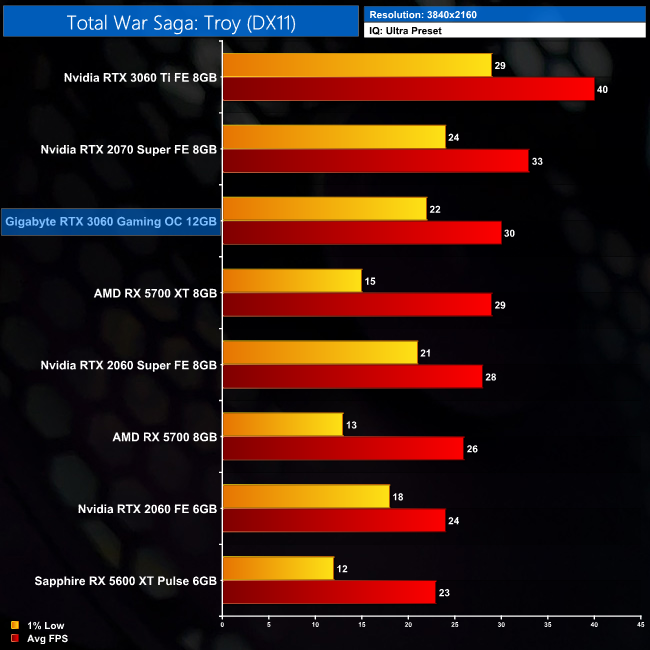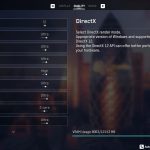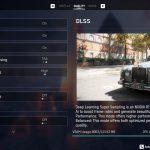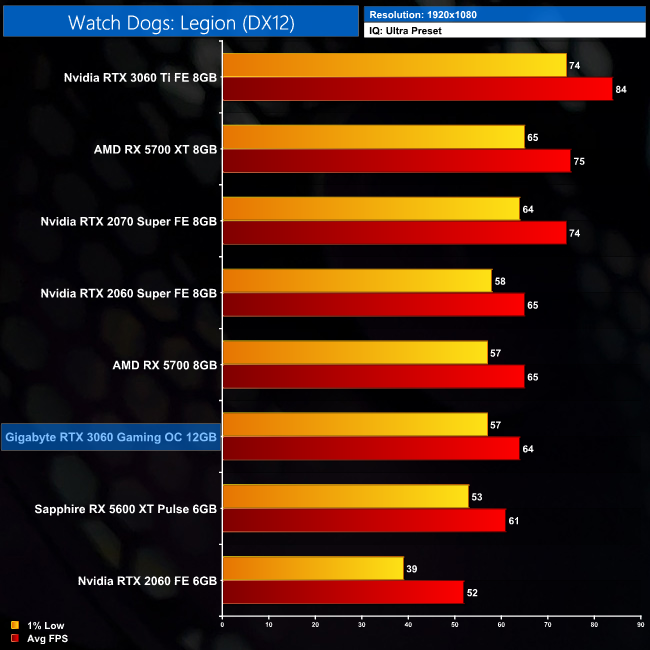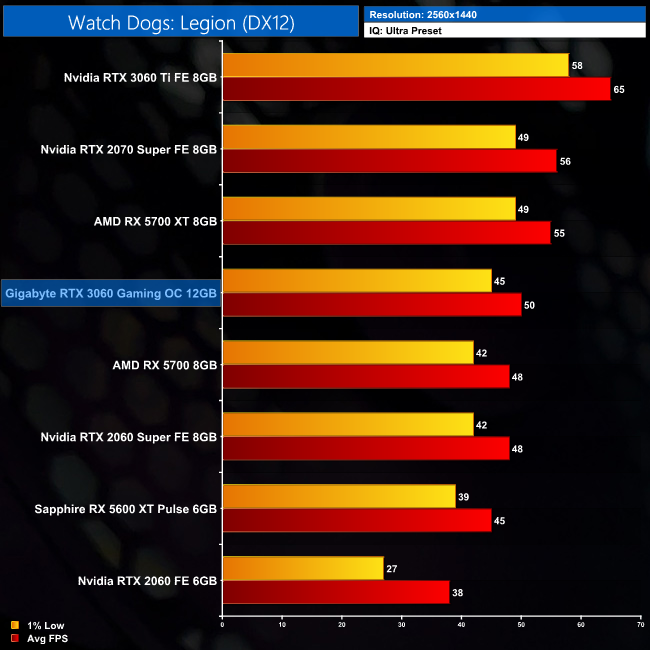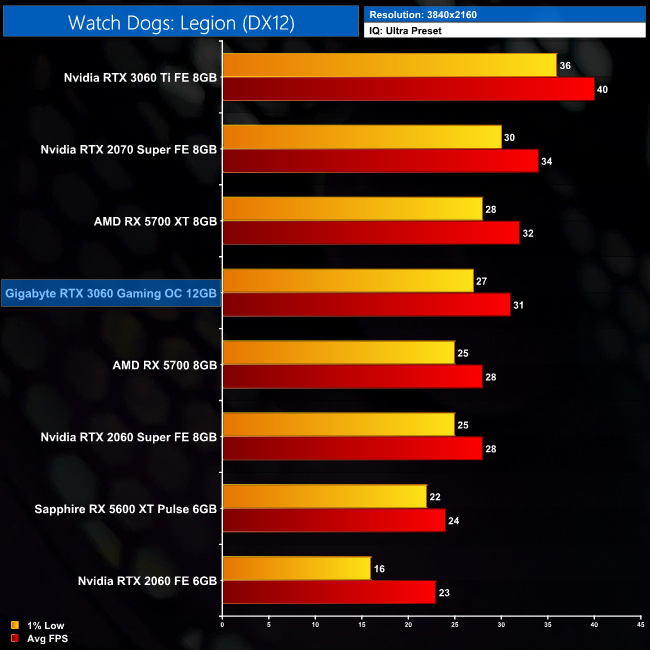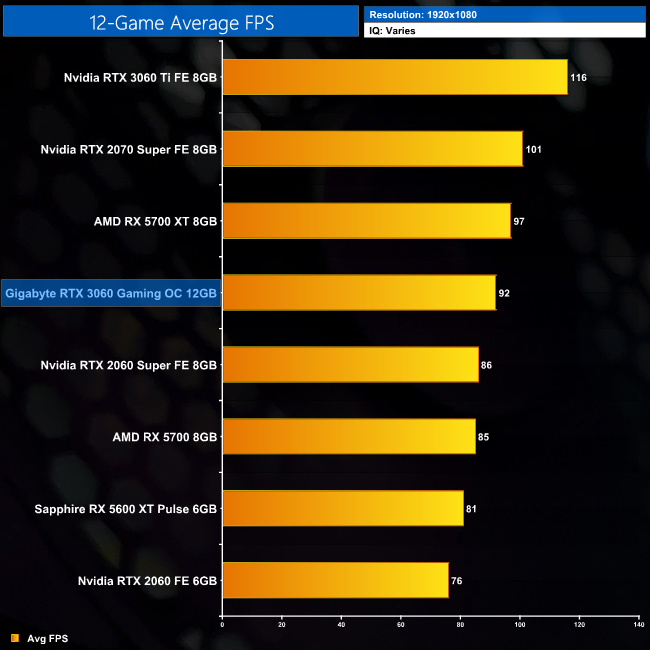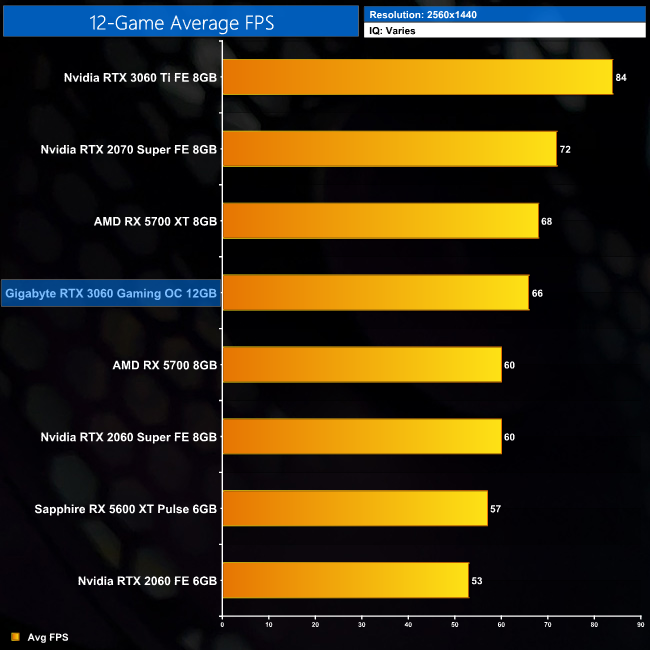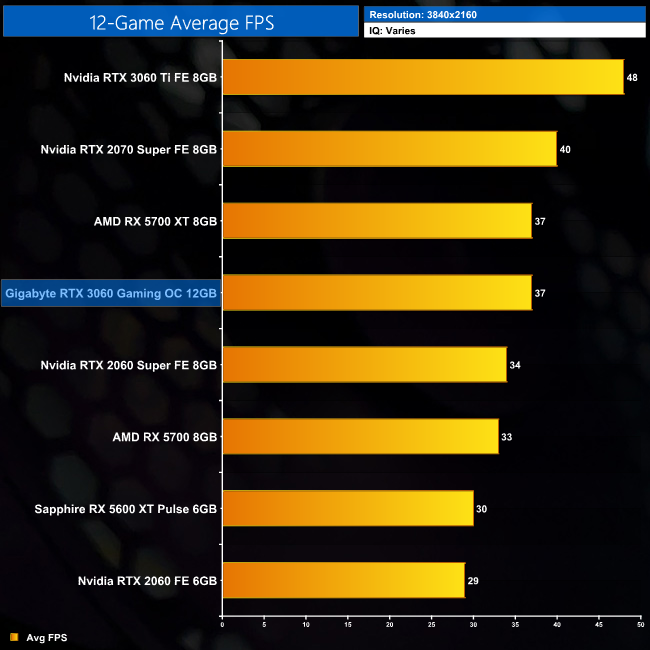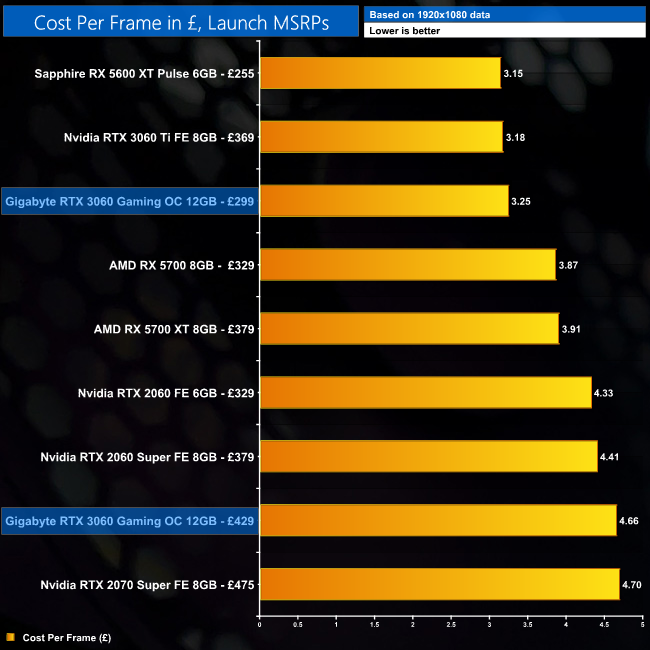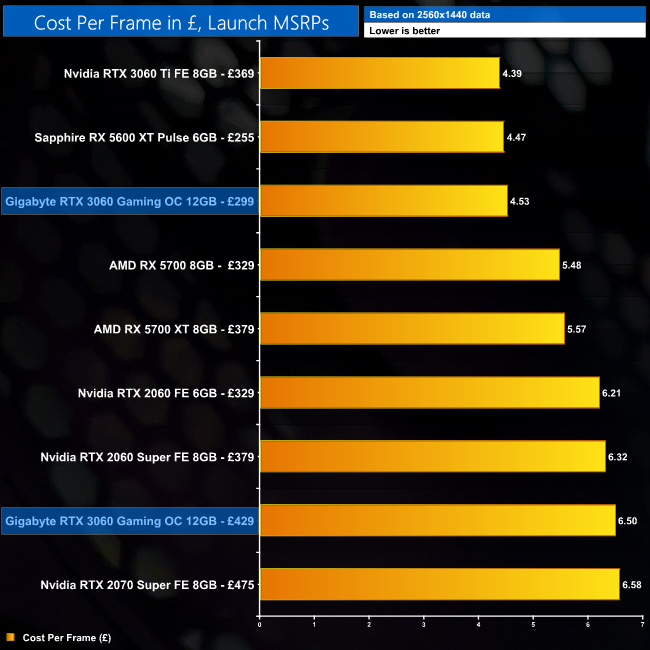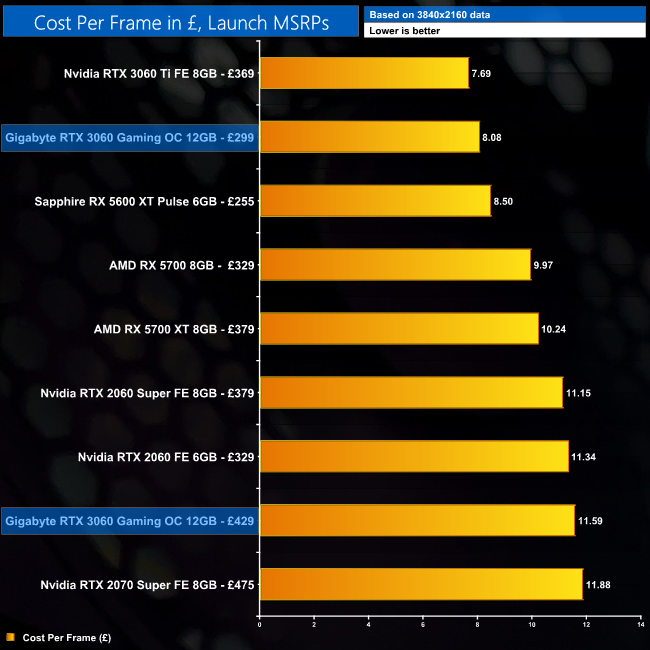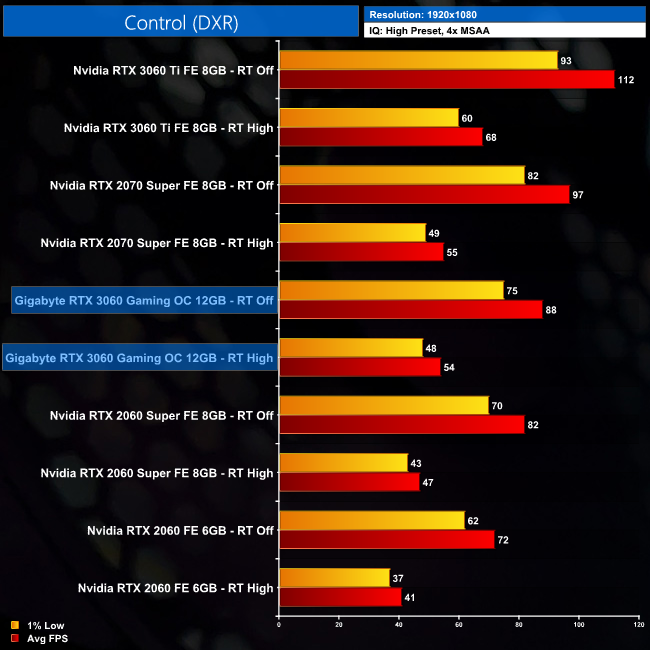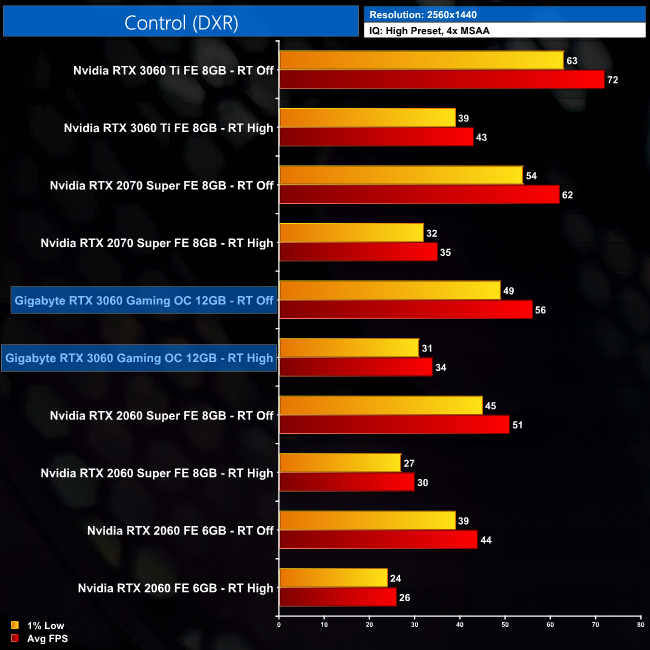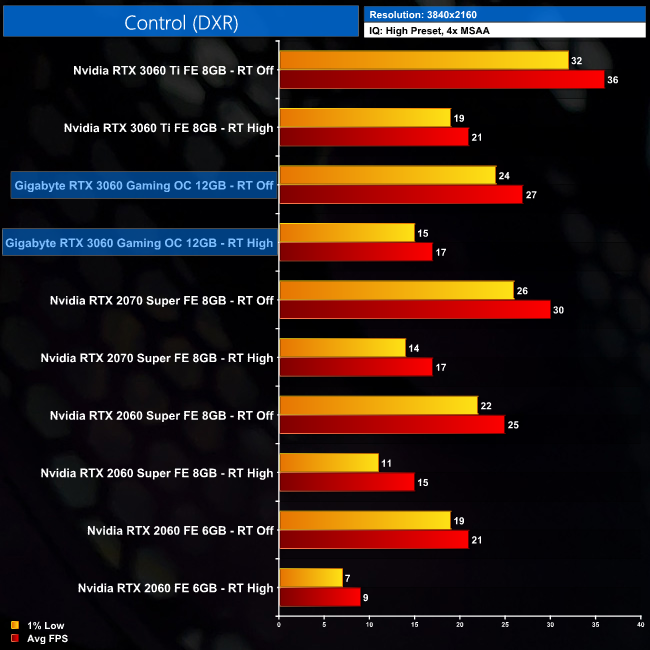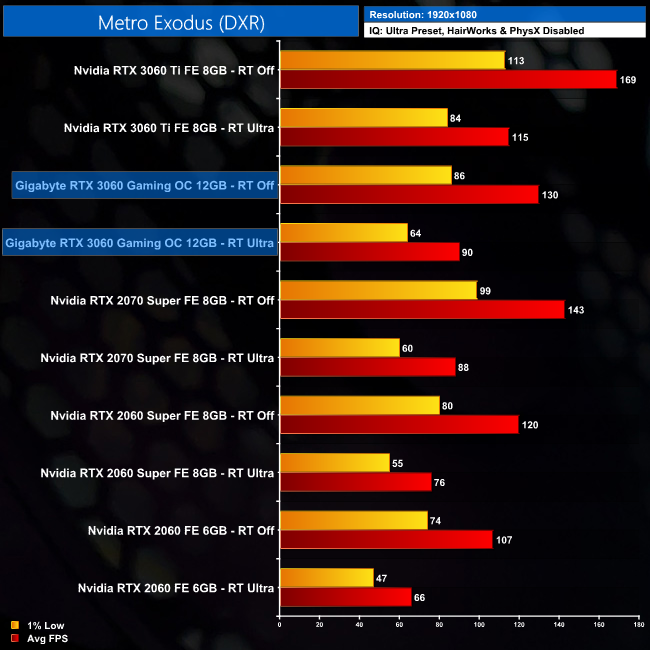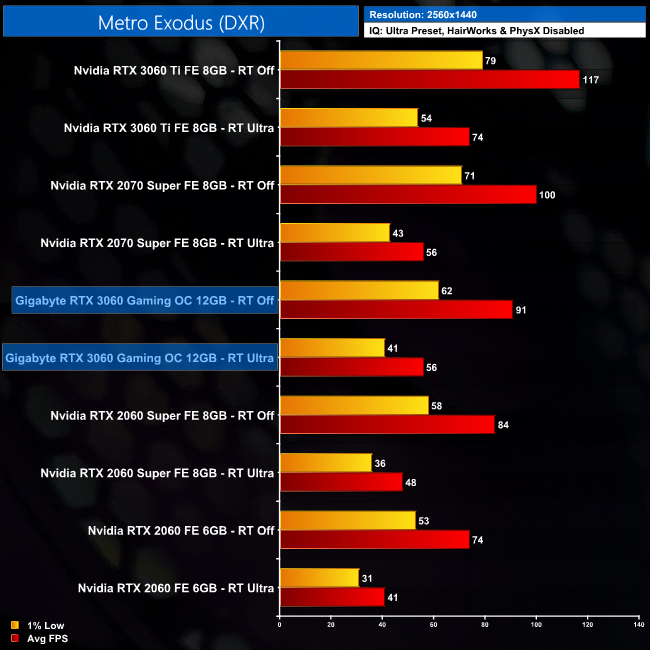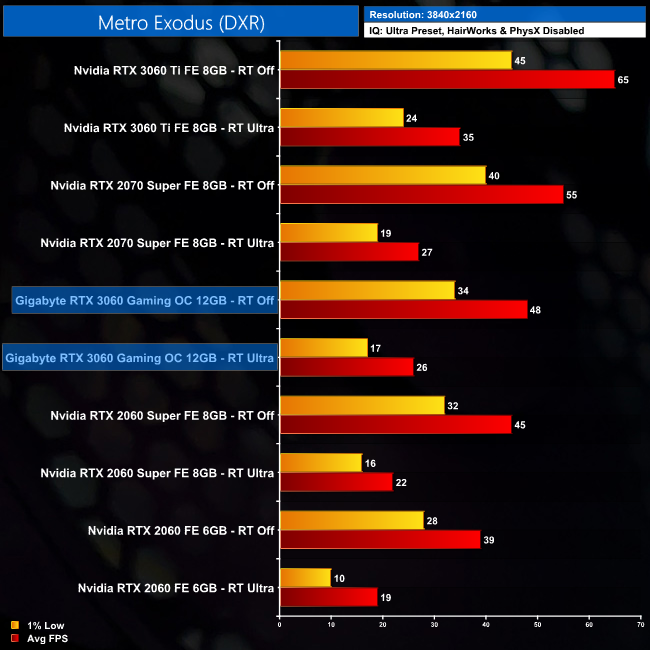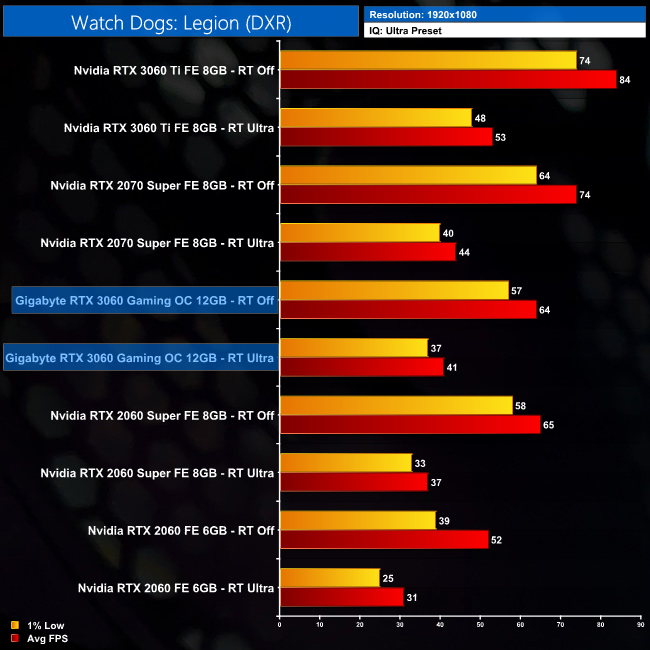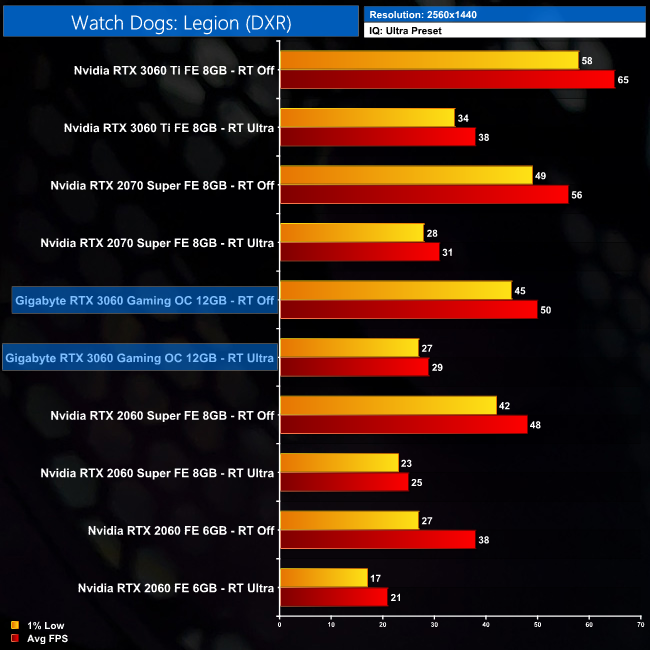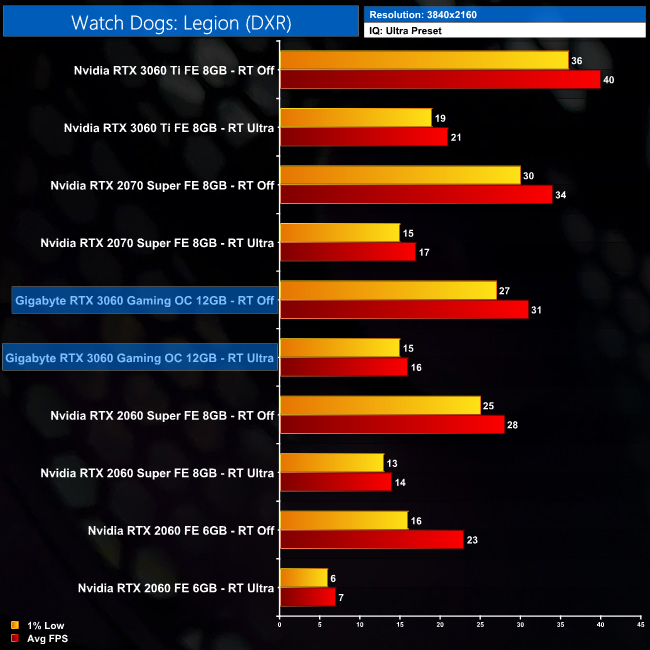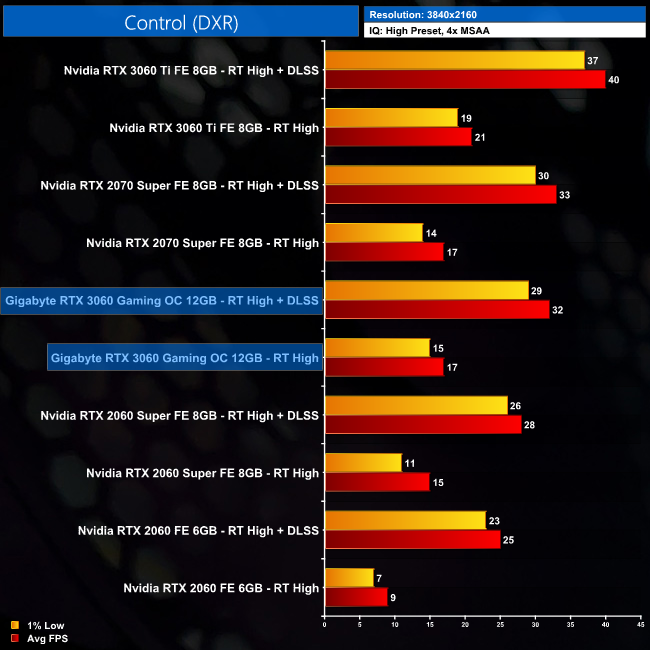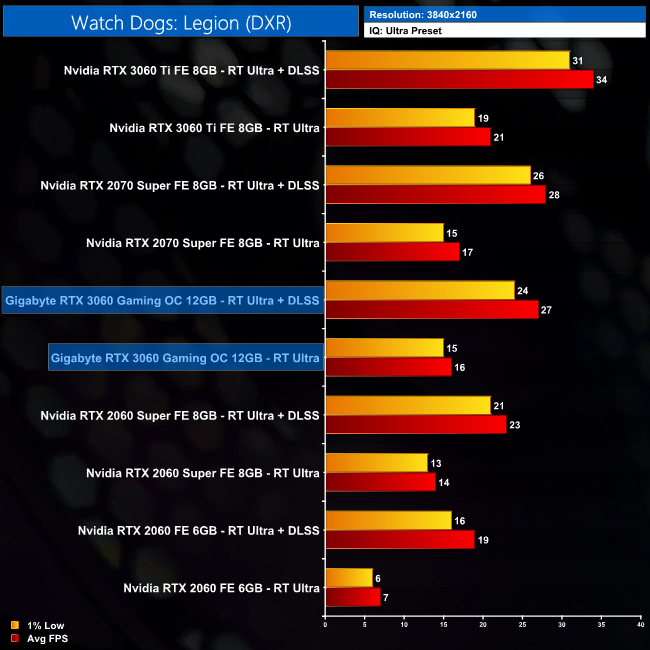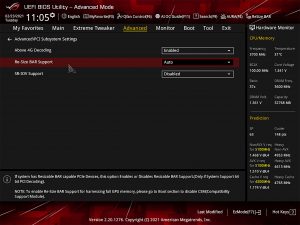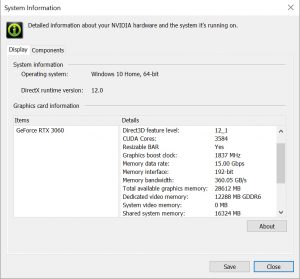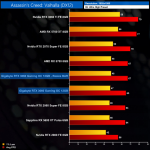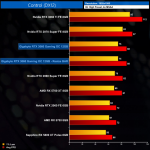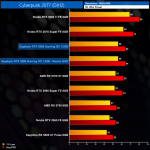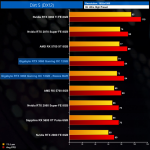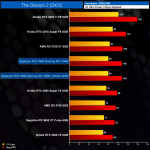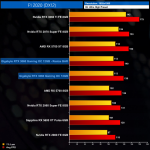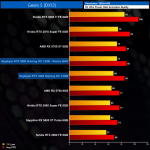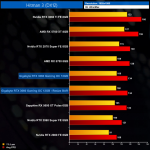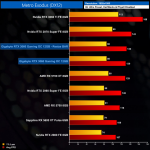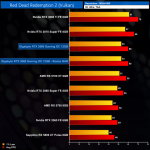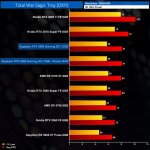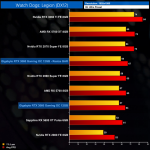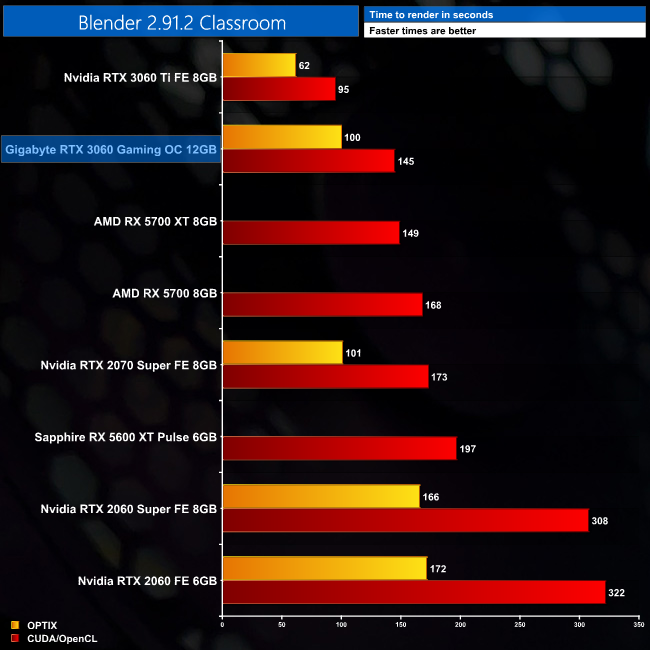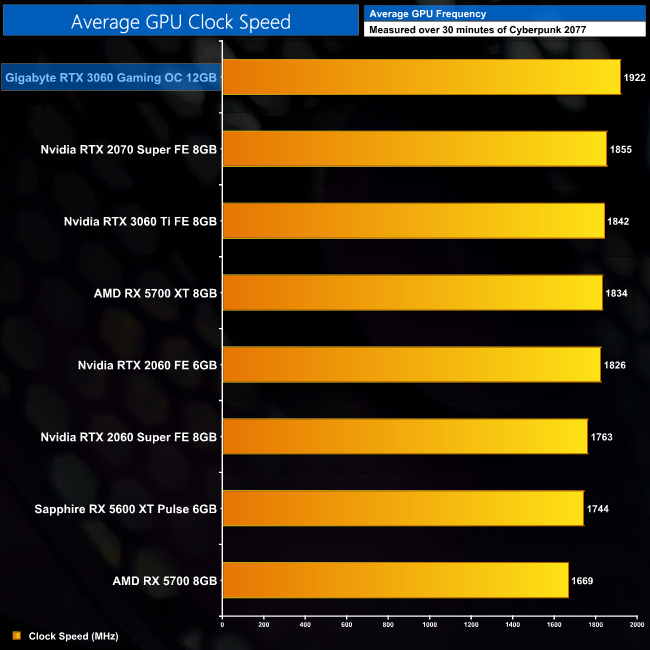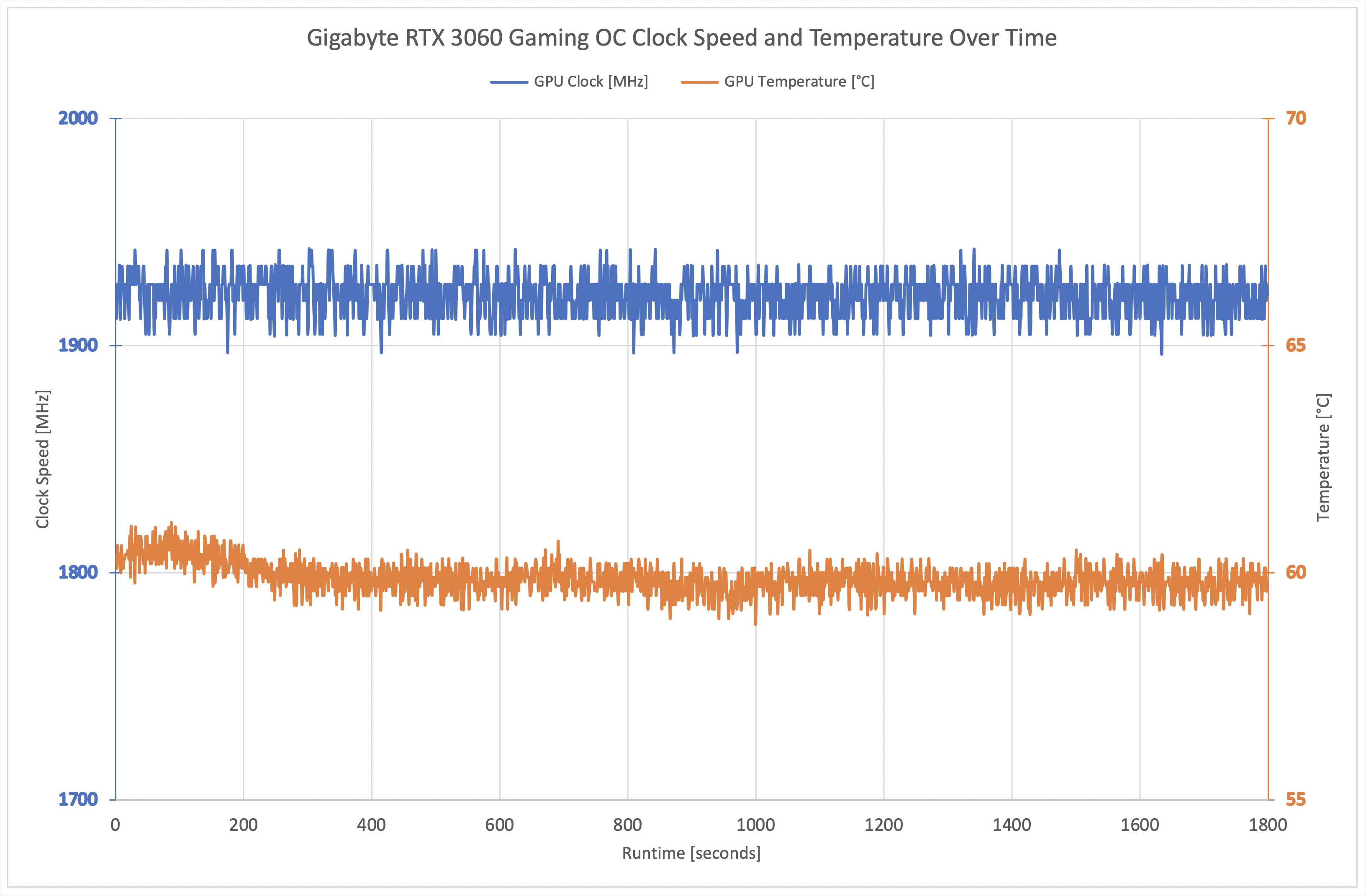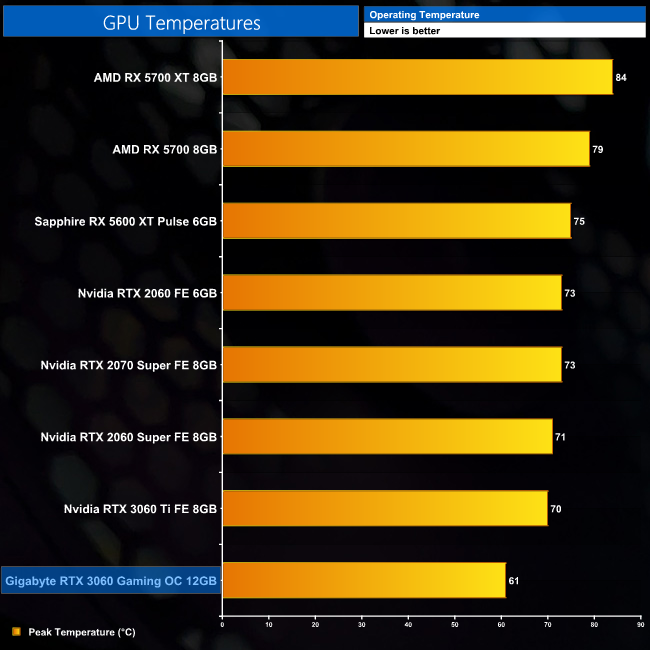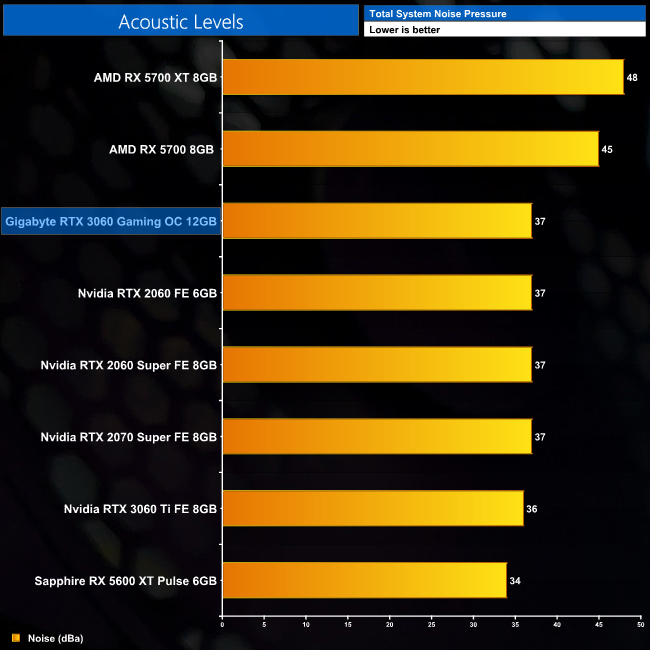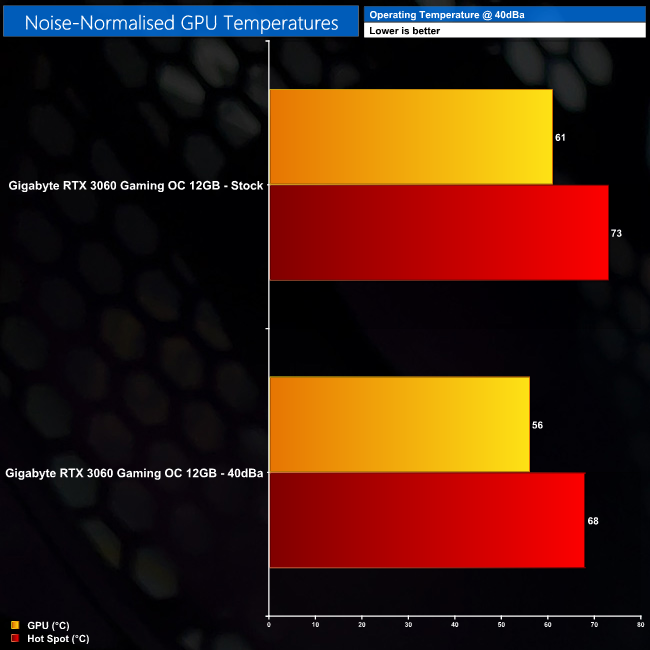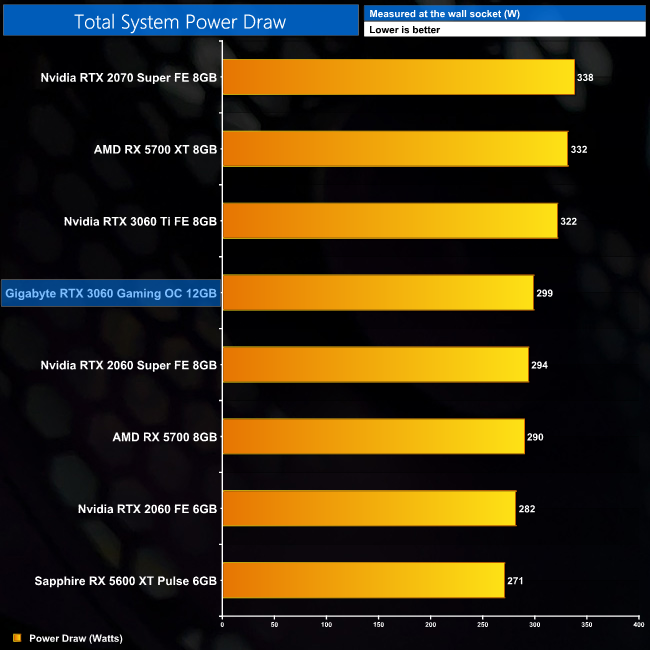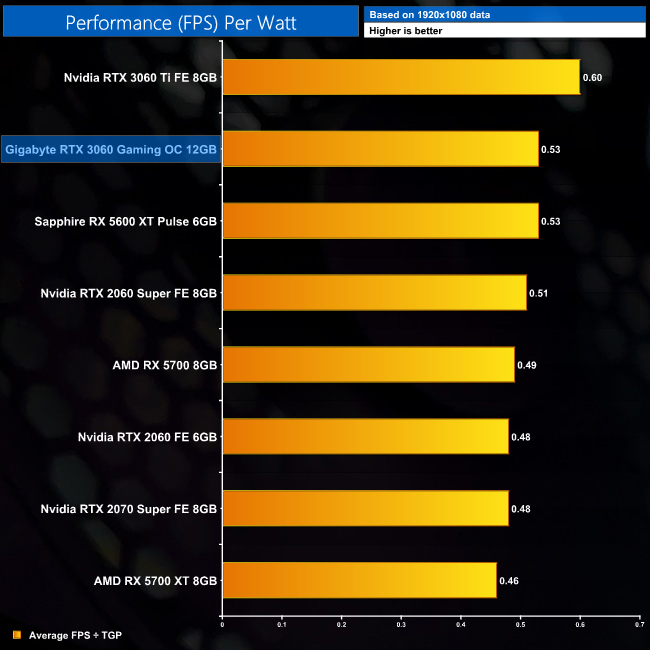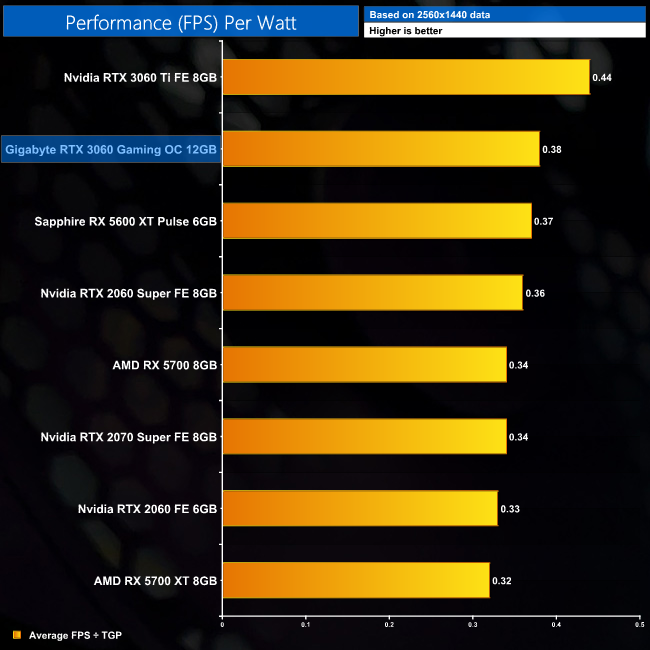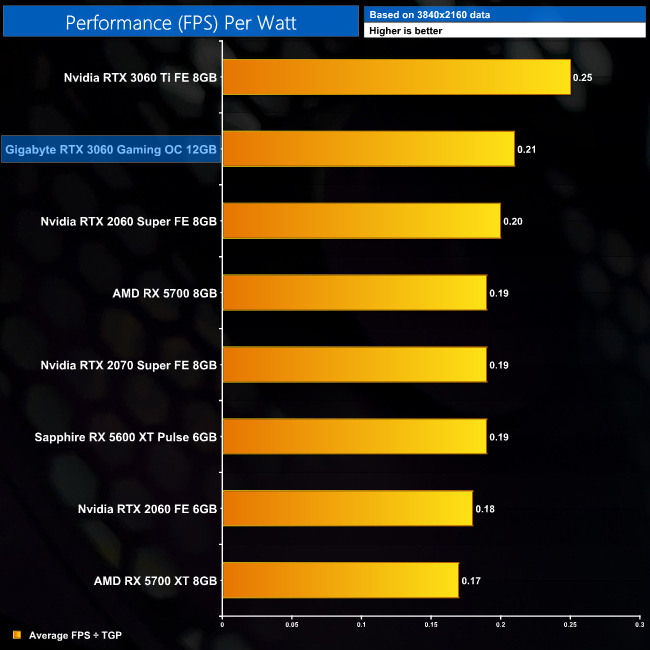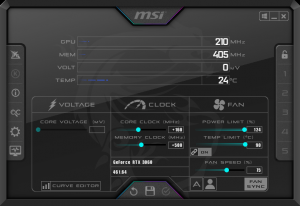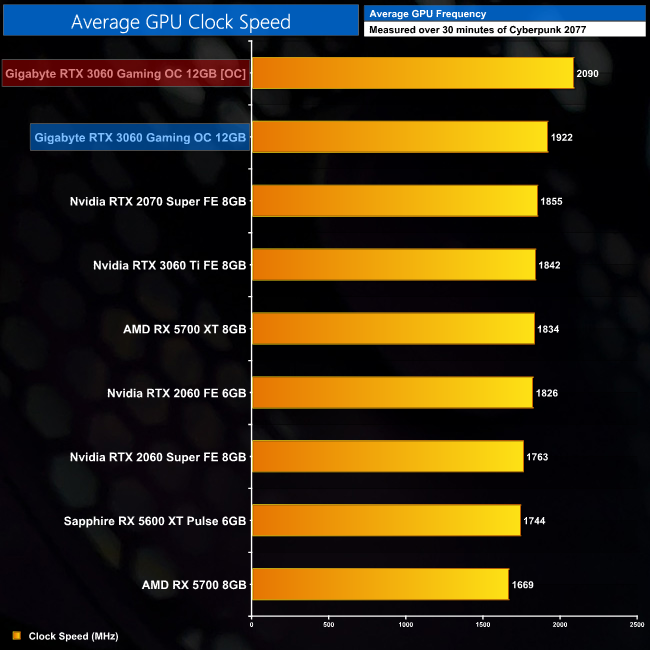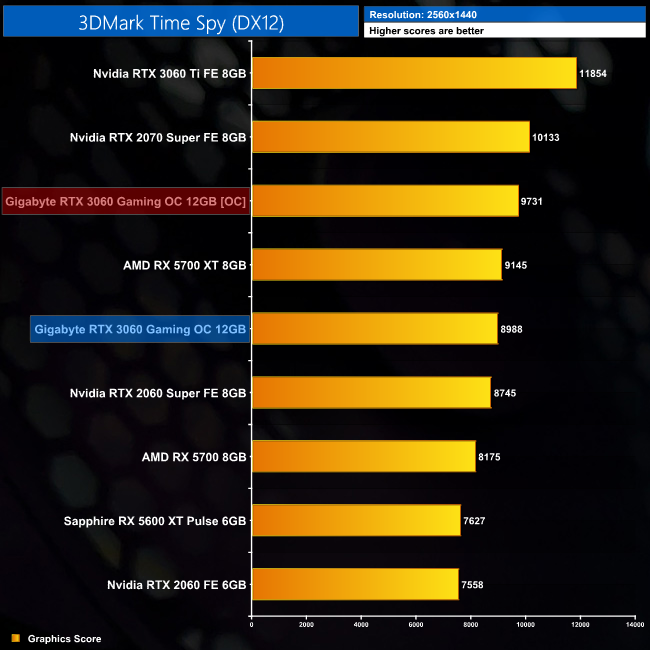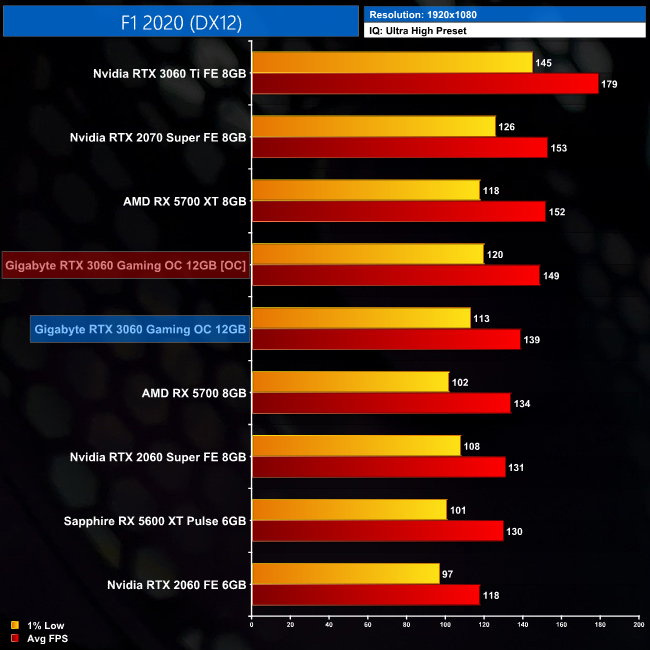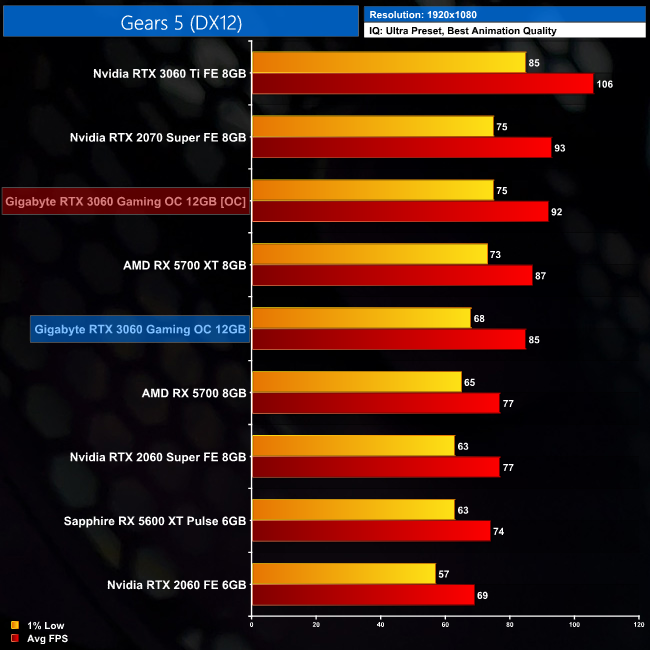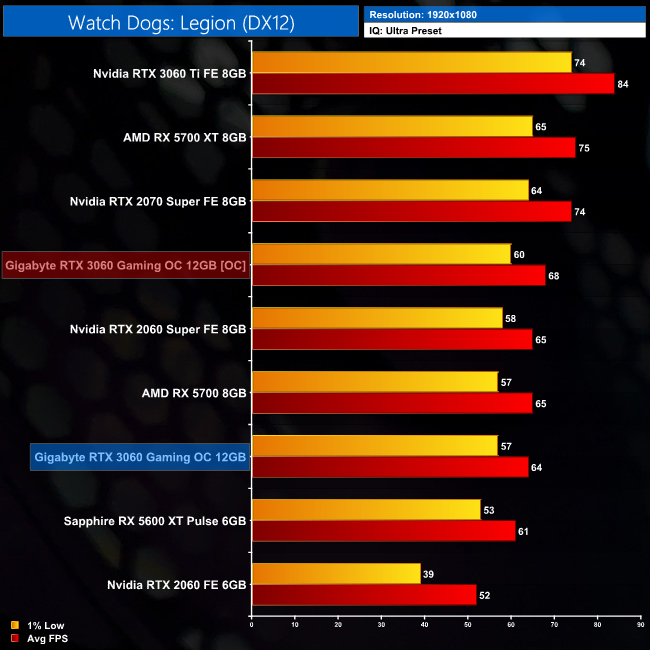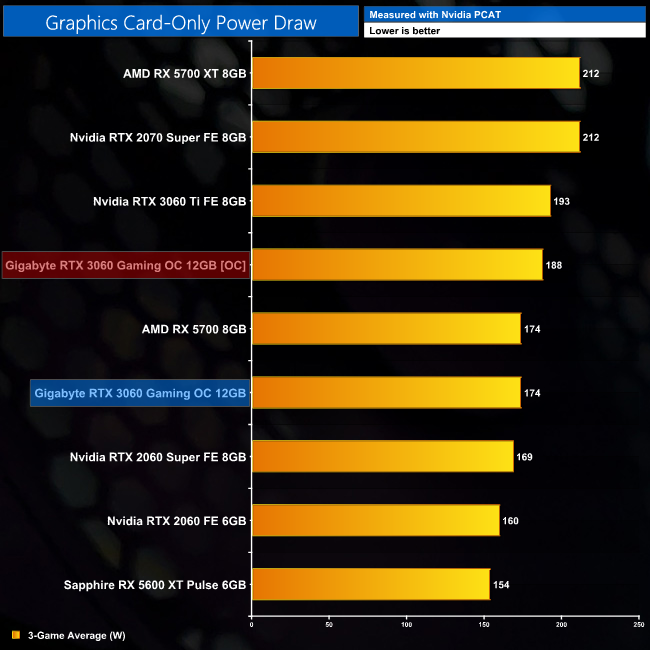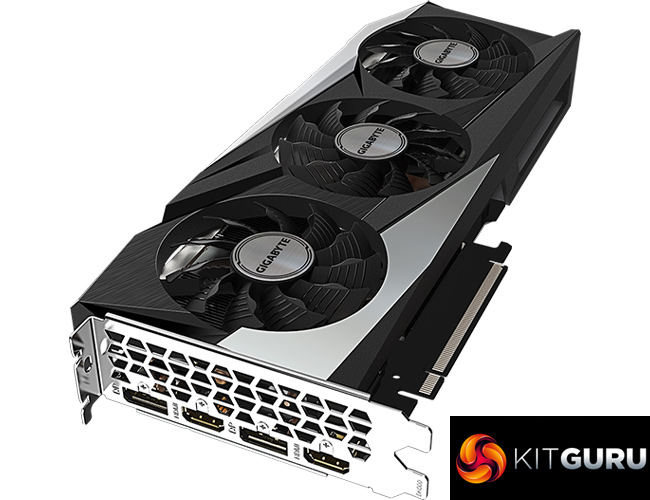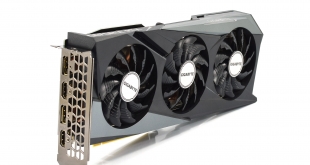
Announced back at CES 2021, today is the official launch for the RTX 3060. Nvidia's latest Ampere GPU, the RTX 3060 is meant to be the cheapest, with prices starting at £299… but by now I think we all know that is unlikely to be the case any time soon. Still, RTX 3060 sees the introduction of the new GA106 GPU which Nvidia hopes will unlock a new level of performance in this mid-range segment. We put this card through its paces and find out what it has to offer.
With Ampere products so far, both RTX 3090 and RTX 3080 have used the GA102 GPU, while RTX 3060 Ti and RTX 3070 are based on GA104. Now, with the introduction of RTX 3060, Nvidia has unveiled its smallest Ampere-based chip yet – GA106, measuring 276 mm².
RTX 3060 also marks the point where Nvidia will no longer manufacturer a Founders Edition for this GPU. Last generation, RTX 2060 got a Founders card, but not so for the RTX 3060. For this launch review, we have tested Gigabyte's RTX 3060 Gaming OC 12G.
| GPU | RTX 3090 | RTX 3080 | RTX 3070 | RTX 3060 Ti | RTX 3060 |
| SMs | 82 | 68 | 46 | 38 | 28 |
| CUDA Cores | 10496 | 8704 | 5888 | 4864 | 3584 |
| Tensor Cores | 328 | 272 | 184 | 152 | 112 |
| RT Cores | 82 | 68 | 46 | 38 | 28 |
| Texture Units | 328 | 272 | 184 | 152 | 112 |
| ROPs | 112 | 96 | 96 | 80 | 48 |
| GPU Boost Clock | 1695 MHz | 1710 MHz | 1725 MHz | 1665 MHz | 1777 MHz |
| Memory Data Rate | 19.5 Gbps | 19 Gbps | 14 Gbps | 14 Gbps | 15 Gbps |
| Total Video Memory | 24GB GDDR6X | 10GB GDDR6X | 8GB GDDR6 | 8GB GDDR6 | 12GB GDDR6 |
| Memory Interface | 384-bit | 320-bit | 256-bit | 256-bit | 192-bit |
| Memory Bandwidth | 936 GB/Sec | 760 GB/Sec | 448 GB/Sec | 448 GB/Sec | 360 GB/sec |
| TGP | 350W | 320W | 220W | 200W | 170W |
Despite utilising new GA106 silicon, RTX 3060 isn't actually a full implementation of the GPU, as it has 28 streaming multiprocessors (SMs) instead of 30. Currently only RTX 3060 for laptops uses the full GPU. For the desktop chip, 28 SMs means a total of 3584 CUDA Cores, as thanks to Ampere’s new SM structure with its two FP32 datapaths, each SM houses 128 CUDA cores.
Ampere also places one RT core, and four Tensor cores, in each SM, giving a total of 28 RT cores and 112 Tensor cores. This is accompanied by 112 texture units, and 48 ROPs which are now housed directly within each graphics processing cluster (GPC), with 16 ROPs per GPC, and 3 GPCs in total for RTX 3060.
Interestingly, rated clock speed is the highest it has been for an Ampere GPU, coming in at 1777MHz for the reference spec. This Gigabyte Gaming OC model however, has increased this to 1837MHz, and we test real-world clock speed behaviour later in this review.
There's been a lot of talk about Nvidia's decision to use 12GB GDDR6 memory for the RTX 3060. This is more than the RTX 3060 Ti, RTX 3070 and even RTX 3080, but crucially the memory interface is much narrower at 192-bit. With memory clocked at 15Gbps, total memory bandwidth comes in at 360GB/s, about 20% lower than the RTX 3060 Ti.
Lastly, for total graphics power, Nvidia rates the RTX 3060 for 170W, which is 30W less than the RTX 3060 Ti. Despite being factory overclocked, the Gigabyte Gaming OC also shares this TGP rating.
The Gigabyte RTX 3060 Gaming OC 12G ships in a black box, with Gigabyte's robotic eye logo dominating the front.
On the back, the company highlights some key features on the card, including its fan configuration and metal backplate.
The only included accessory is a small quick-start guide.
As for the card itself, the design is identical to other Gaming OC cards we have reviewed this generation, including the RTX 3070 model. This means we have a plastic shroud that's mostly black, but with a couple of grey sections as well. All told, it is a pretty understated design and it's very colour neutral.
For the cooler, Gigabyte is using its WindForce 3X design, obviously meaning it is a triple-fan configuration, with each fan measuring 80mm. As we have come to expect, the fans utilise Gigabyte’s Alternate Spinning feature, where the central fan spins in reverse relative to the outer two, which should reduce turbulence and increase overall pressure down onto the heatsink itself.
While we haven't yet tested other RTX 3060s, I'd expect this card to be one of the bigger ones – it measures 282mm x 117mm x41mm. We test thermals and noise levels later in the review.
The backplate is a full-length metal design, in a greyish/silver colour. It features the Gigabyte branding printed in white text, just below the GeForce RTX branding. A large cut-out towards the end of the card is designed to allow airflow to pass directly through the heatsink.
For display outputs, we find 2x HDMI 2.1 and 2x DisplayPort 1.4. Power requirements are a single 8-pin PCIe connector.
In terms of the PCB, Gigabyte is using a 6 phase VRM for the GPU and 2 phase VRM for the memory. The GPU VRM is controlled by a UPI uP9512R and uses Alpha and Omega AOZ5311NQI MOSFETs. The memory VRM is controlled by a UPI uP1666Q and uses AON6994 asymmetric dual-N-channel MOSFETs.
Despite the memory being officially specced at 15Gbps, we can see Gigabyte is using 16Gbps modules from Samsung, model code ‘K4ZAF325BM-HC16.'
The cooler meanwhile is comprised of three aluminium fin stacks. These are connected by three 6mm copper heatpipes which make direct contact with the GPU die. The VRM and memory contact with separate plates on the heatsink via thermal pads.
The metal backplate does not use thermal pads to contact with the back of the PCB.
Driver Notes
- All Nvidia GPUs (except RTX 3060) were benchmarked with the 461.40 driver.
- RTX 3060 was benchmarked with the 461.64 driver supplied to press.
- All AMD GPUs were benchmarked with the Adrenalin 21.2.2 driver.
Test System
We test using the a custom built system from PCSpecialist, based on Intel's Comet Lake-S platform. You can read more about it over HERE, and configure your own system from PCSpecialist HERE.
| CPU |
Intel Core i9-10900K
Overclocked to 5.1GHz on all cores |
| Motherboard |
ASUS ROG Maximus XII Hero Wi-Fi
|
| Memory |
Corsair Vengeance DDR4 3600MHz (4 X 8GB)
CL 18-22-22-42
|
| Graphics Card |
Varies
|
| System Drive |
500GB Samsung 970 Evo Plus M.2
|
| Games Drive | 2TB Samsung 860 QVO 2.5″ SSD |
| Chassis | Fractal Meshify S2 Blackout Tempered Glass |
| CPU Cooler |
Corsair H115i RGB Platinum Hydro Series
|
| Power Supply |
Corsair 1200W HX Series Modular 80 Plus Platinum
|
| Operating System |
Windows 10 2004
|
Comparison Graphics Cards List
- Nvidia RTX 3060 Ti FE 8GB
- Nvidia RTX 2070 Super FE 8GB
- Nvidia RTX 2060 Super FE 8GB
- Nvidia RTX 2060 FE 6GB
- AMD RX 5700 XT 8GB
- AMD RX 5700 8GB
- Sapphire RX 5600 XT Pulse 6GB
Software and Games List
- 3DMark Fire Strike & Fire Strike Ultra (DX11 Synthetic)
- 3DMark Time Spy (DX12 Synthetic)
- 3DMark Raytracing Feature Test (DXR Synthetic)
- Assassin's Creed Valhalla (DX12)
- Control (DX12)
- Cyberpunk 2077 (DX12)
- Dirt 5 (DX12)
- The Division 2 (DX12)
- F1 2020 (DX12)
- Gears 5 (DX12)
- Hitman 3 (DX12)
- Metro: Exodus (DX12)
- Red Dead Redemption 2 (Vulkan)
- Total War Saga: Troy (DX11)
- Watch Dogs: Legion (DX12)
We run each benchmark/game three times, and present mean averages in our graphs. We use OCAT to measure average frame rates as well as 1% low values across our three runs.
Fire Strike is a showcase DirectX 11 benchmark for modern gaming PCs. Its ambitious real-time graphics are rendered with detail and complexity far beyond other DirectX 11 benchmarks and games. Fire Strike includes two graphics tests, a physics test and a combined test that stresses the CPU and GPU. (UL).
3DMark Time Spy is a DirectX 12 benchmark test for Windows 10 gaming PCs. Time Spy is one of the first DirectX 12 apps to be built the right way from the ground up to fully realize the performance gains that the new API offers. With its pure DirectX 12 engine, which supports new API features like asynchronous compute, explicit multi-adapter, and multi-threading, Time Spy is the ideal test for benchmarking the latest graphics cards. (UL).
Our first performance indication comes from 3DMark. In Fire Strike, the RTX 3060 outperforms the RTX 2060 by 14%, and this rises to 19% in both Time Spy and Fire Strike Ultra.
Real-time ray tracing is incredibly demanding. The latest graphics cards have dedicated hardware that’s optimized for ray-tracing. The 3DMark DirectX Raytracing feature test measures the performance of this dedicated hardware. Instead of using traditional rendering techniques, the whole scene is ray-traced and drawn in one pass. The result of the test depends entirely on ray-tracing performance. (UL).
3DMark's DXR feature-test gives us an indication of raw ray-tracing performance. Here, the RTX 3060 massively outperforms the RTX 2060, in the region of 50%. It's also about 10% ahead of the RTX 2070 Super.
Assassin's Creed Valhalla is an action role-playing video game developed by Ubisoft Montreal and published by Ubisoft. It is the twelfth major installment and the twenty-second release in the Assassin's Creed series, and a successor to the 2018's Assassin's Creed Odyssey. The game was released on November 10, 2020, for Microsoft Windows, PlayStation 4, Xbox One, Xbox Series X and Series S, and Stadia, while the PlayStation 5 version was released on November 12. (Wikipedia.)
Engine: AnvilNext 2.0. We test using the Ultra High preset, DX12 API.
Let's kick off the games testing with Assassin's Creed Valhalla. At 1080p, the RTX 3060 averaged 65FPS, sitting right between the RTX 2060 Super and the RX 5700. It's also 16% faster than the RTX 2060, but 16% slower than the RX 5700 XT.
Up at 1440p, the RTX 3060 is now dead even with the RX 5700, as both hit 52FPS. The higher resolution also sees the RTX 3060 scale better compared to its predecessor, as it is now 21% faster than the RTX 2060.
Control is an action-adventure video game developed by Remedy Entertainment and published by 505 Games. Control was released on 27 August 2019 for Microsoft Windows, PlayStation 4, and Xbox One. (Wikipedia).
Engine: Northlight Engine. We test using the High preset, with 4x MSAA, DX12 API.
Moving onto Control, this Nvidia-sponsored title sees the RTX 3060 beating out both the RX 5700 and 5700 XT when testing at 1080p, as it hits 88FPS on average. That's a 22% uplift compared to both the RTX 2060 and RX 5700.
As for 1440p, it's still very playable with an average of 56FPS, and that's 10% faster than AMD's RX 5700 XT. The gains compared to the RTX 2060 do also increase as the pixel count goes up, with the RTX 3060 now 27% faster.
Cyberpunk 2077 is a 2020 action role-playing video game developed and published by CD Projekt. The story takes place in Night City, an open world set in the Cyberpunk universe. Players assume the first-person perspective of a customisable mercenary known as V, who can acquire skills in hacking and machinery with options for melee and ranged combat. Cyberpunk 2077 was released for Microsoft Windows, PlayStation 4, Stadia, and Xbox One on 10 December 2020. (Wikipedia)
Engine: REDengine 4. We test using the Ultra preset, DX12 API.
As one of the most demanding games in our suite, it's a great indicator of overall performance to see the RTX 3060 averaging 64FPS in Cyberpunk 2077. This puts it 3% ahead of the RX 5700 XT an 21% ahead of the RTX 2060.
Stepping up to 1440p will reduce average frame rate down to 40FPS, though that's still 5% faster than the RX 5700 XT. It also beats both the RX 5700 and RTX 2060 by another 21% margin.
Dirt 5 (stylised as DIRT5) is a racing video game developed and published by Codemasters. It is the fourteenth game in the Colin McRae Rally series and the eighth game to carry the Dirt title. The game was released for Microsoft Windows, PlayStation 4 and Xbox One on 6 November 2020. (Wikipedia).
Engine: Onrush. We test using the Ultra High preset, DX12 API.
Dirt 5 is next and at 1080p, we're looking at a 22% uplift for the RTX 3060 when compared to its predecessor, the RTX 2060. It's still 5% faster than the RX 5700 in this AMD-sponsored title, but it's also 6% slower than the 5700 XT.
RTX 3060 does scale better against those AMD GPUs at 1440p though. At that higher resolution it is 10% faster than the RX 5700 and just 4% behind the RX 5700 XT. Versus the RTX 2060, we're still looking at a 22% difference in the 3060's favour.
Tom Clancy's The Division 2 is an online action role-playing video game developed by Massive Entertainment and published by Ubisoft. The sequel to Tom Clancy's The Division (2016), it is set in a near-future Washington, D.C. in the aftermath of a smallpox pandemic, and follows an agent of the Strategic Homeland Division as they try to rebuild the city. (Wikipedia).
Engine: Snowdrop. We test using the Ultra preset, but with V-Sync disabled, DX12 API.
Moving onto The Division 2. Frame rates are higher in this game, averaging 108FPS at 1080p. This puts the RTX 3060 neck-and-neck with the RX 5700 XT, while it's a 10% improvement over the 2060 Super. Compared to vanilla 2060, we're talking a 21% FPS increase.
The game is still very smooth at 1440p too, with an average of 71FPS here. That makes the RTX 3060 18% faster than RX 5700, while it's 27% faster than the RTX 2060, which is one of the biggest margins we will see between those two GPUs.
F1 2020 is the official video game of the 2020 Formula 1 and Formula 2 Championships developed and published by Codemasters. It is the thirteenth title in the Formula 1 series developed by the studio and was released on 7 July 2020 for pre-orders of the Michael Schumacher Edition and 10 July 2020 for the Seventy Edition on Microsoft Windows, PlayStation 4, Xbox One. (Wikipedia).
Engine: EGO. We test using the Ultra High preset, DX12 API.
Frame rates get even higher in F1 2020, with the RTX 3060 almost managing 140FPS at 1080p. This puts it above both the RTX 2060 Super and RX 5700, but it's 9% slower than the RX 5700 XT. Gen-on-gen, we're looking at an 18% uplift versus the 2060.
As expected, performance is still excellent at 1440p, with the average frame rate holding above 100FPS. Scaling against the RX 5700 and 5700 XT hasn't changed, but the 3060 is now 22% faster than the 2060.
Gears 5 is a third-person shooter video game developed by The Coalition and published by Xbox Game Studios for Xbox One, Microsoft Windows and Xbox Series X. It is the fifth installment of the Gears of War series and the sequel to Gears of War 4. The ultimate edition was released on September 6, 2019, while the standard edition of the game was released worldwide on September 10, 2019. (Wikipedia).
Engine: Unreal Engine 4. We test using the Ultra preset, with Best Animation Quality (instead of Auto), VRS disabled, DX12 API.
Gears 5 is a lot tougher on the GPU than F1 2020, and at 1080p we see 85FPS on average for the RTX 3060. Despite this being an AMD-sponsored title, that makes the 3060 10% faster than the RX 5700, while it's only just behind the RX 5700 XT. Against the RTX 2060, we're looking at an extra 23% performance.
At 1440p, the RTX 3060 scales even better, as it is now 2% faster than the RX 5700 XT, but 13% ahead of the RX 5700. Performance has also improved by 25% against the RTX 2060.
Hitman 3 (stylized as HITMAN III) is a stealth game developed and published by IO Interactive for Microsoft Windows, PlayStation 4, PlayStation 5, Xbox One, Xbox Series X/S, Stadia (under the title Hitman: World of Assassination), and Nintendo Switch on 20 January 2021. It is the eighth main installment in the Hitman series and the final entry in the World of Assassination trilogy, following Hitman (2016) and Hitman 2 (2018). (Wikipedia).
Engine: Glacier. We test using Ultra settings (or High where Ultra is not available), VRS off, DX12 API.
Next we come to Hitman 3, a pretty new game and despite not being sponsored by either AMD or Nvidia, it is AMD GPUs which perform a lot better than expected in this title. The RTX 3060, for instance, is 4% slower than the RX 5700 here and only fractionally ahead of the RX 5600 XT at 1080p.
Up at 1440p, frame rates are still very high, hitting 91FPS average, but the AMD GPUs once more have the upper hand. There's basically no difference between the 3060 and the 5600 XT, while the 3060 is 16% slower than the RX 5700 XT.
Metro Exodus is a first-person shooter video game developed by 4A Games and published by Deep Silver in 2019. It is the third instalment in the Metro video game series based on Dmitry Glukhovsky's novels, following the events of Metro 2033 and Metro: Last Light. (Wikipedia).
Engine: 4A Engine. We test using the Ultra preset, but with Hairworks and Advanced PhysX turned off, DX12 API.
Next we come to Metro Exodus. This turns the tide back towards the RTX 3060, as at 1080p it is level with the RX 5700 XT but 12% faster than the RX 5700. Gen-on-gen, we're looking at another 21% boost versus the RTX 2060.
That GPU scaling is pretty consistent at 1440p too, as the RTX 3060 is fractionally ahead of the RX 5700 XT, while it's 8% faster than the 2060 Super.
Red Dead Redemption 2 is a 2018 action-adventure game developed and published by Rockstar Games. The game is the third entry in the Red Dead series and is a prequel to the 2010 game Red Dead Redemption. Red Dead Redemption 2 was released for the PlayStation 4 and Xbox One in October 2018, and for Microsoft Windows and Stadia in November 2019. (Wikipedia).
Engine: Rockstar Advance Game Engine (RAGE). We test by manually selecting Ultra settings (or High where Ultra is not available), TAA, Vulkan API.
Red Dead Redemption 2 is another game where we see strong performance from the RTX 3060. Averaging exactly 60FPS at 1080p, the 3060 is 20% faster than the RX 5700 here, which is pretty impressive. It's also 3% ahead of the RX 5700 XT and 22% faster than its direct predecessor.
Up at 1440p, I'd say Red Dead 2 is still very playable with the RTX 3060, averaging just under 50FPS. That's still 20% faster than the RX 5700, while it's also 4% ahead of the RX 5700 XT.
Total War Saga: Troy is a 2020 turn-based strategy video game developed by Creative Assembly Sofia and published by Sega. The game was released for Windows on 13 August 2020 as the second installment in the Total War Saga subseries, succeeding Thrones of Britannia (2018). (Wikipedia).
Engine: TW 3 Engine. We test using the Ultra preset, with unlimited video memory enabled, DX11 API.
Second to last, we have Total War Saga: Troy. This DX11 title sees the RTX 3060 once more ahead of the RX 5700 by a decent margin – 13% at 1080p – while it's basically on-par with the RX 5700 XT. Compared to the RTX 2060 however, scaling isn't as impressive here, as the Ampere GPU is 16% faster than its predecessor.
Up at 1440p, that does improve, as the RTX 3060 is 19% faster than the RTX 2060, averaging 56FPS. It's still just about faster than the RX 5700 XT too.
Watch Dogs: Legion is a 2020 action-adventure game published by Ubisoft and developed by its Toronto studio. It is the third instalment in the Watch Dogs series, and the sequel to 2016's Watch Dogs 2. Legion was released on October 29, 2020 for Microsoft Windows, PlayStation 4, Xbox One, and Stadia. (Wikipedia).
Engine: Disrupt. We test using the Ultra preset, DX12 API.
Our final game of the day is Watch Dogs: Legion. The results are fascinating here, as at 1080p the RTX 3060 gets pumped by the RX 5700 XT, coming in 15% slower. It's also just behind the RX 5700, and remember this is an Nvidia-sponsored title.
At 1440p, the RTX 3060 does catch up somewhat, but it's still 9% slower than the RX 5700 XT. Versus the RTX 2060, however, we're looking at a 32% gen-on-gen improvement, the biggest difference between the two GPUs across all of our games at 1440p.
Here we present frame rate figures for each graphics card, averaged across all 12 games on test today. These figures can disguise significant variations in performance from game to game, but provide a useful overview of the sort of performance you can expect at each resolution tested.
Looking at our average performance, the RTX 3060 sits pretty neatly between the RX 5700 and RX 5700 XT at 1080p. It's 5% slower than the 5700 XT, but also 8% faster than the RX 5700. Compared to the RTX 2060 Super, it's 7% faster, while we see a 21% difference between the RTX 3060 and the RTX 2060. Relative to the RTX 3060 Ti, the RTX 3060 is 20% slower.
As for 1440p, the RTX 3060 is a viable option for this resolution, provided you don't mind dropping below 60FPS in certain titles. Here, the RTX 3060 is on average 3% slower than the RX 5700 XT, and 10% faster than the RX 5700. It also extends its lead over the RTX 2060 to 25%, but is 21% slower than RTX 3060 Ti.
Using the average frame rate data presented on the previous page, here we look at the cost per frame using the UK MSRP launch prices for each GPU.
Cost per frame isn't a particularly useful metric at the minute given GPU prices are all over the place, and significantly higher than the given MSRPs, so consider these charts for ‘academic' purpose only. Nvidia's MSRP for the RTX 3060 is £299, while Gigabyte has told us this Gaming OC model has an MSRP of £429.99, which is obviously much higher. We've therefore included two data points for the GPU, to give you an idea of what sort of cost per frame we'd be looking at if GPUs were actually in stock.
Here we revisit Control, this time testing with the in-game ray tracing effects set to their highest values.
RTX 3060 is designed as a 1080p GPU, and that is particularly the case when looking at ray tracing. In Control, the performance with RT set to high is respectable, averaging 54FPS at 1080p. That's a 39% reduction in FPS compared to playing with ray tracing disabled, although there is also the option to enable DLSS 2.0 (which we look at later). We do see the RTX 3060 coming closer to the RTX 2070 Super however, as they are effectively matched at 1080p.Here we revisit Metro Exodus, this time testing with the in-game ray tracing effects set to their highest values.
Metro Exodus' ray traced global illumination isn't quite so demanding, as we see a 31% hit when enabling ray tracing in this title. That means the RTX 3060 averaged 90FPS with RT set to Ultra, which isn't bad and puts it on par with the RTX 2070 Super, which is the faster GPU when ray tracing is disabled.
At 1440p, the RTX 3060 maintains 56FPS on average in this game, but remember there's no DLSS 2.0 support in Metro Exodus – only the blurrier DLSS 1.0.
Here we revisit Watch Dogs: Legion, this time testing with the in-game ray tracing effects set to their highest values.
Finally we come to Watch Dogs: Legion, which uses ray traced reflections. At 1080p, enabling ray tracing sees a 36% reduction in frame rate, dropping the average FPS down to 41. That's decent scaling against the RTX 2070 Super though, as the 3060 is just 7% slower with ray tracing enabled, when it's 14% slower with ray tracing disabled.Both Control and Watch Dogs: Legion support DLSS 2.0, so we test both at 4K with and without DLSS (using the Quality mode). We tested Control with RT set to High, and with RT set to Ultra in Watch Dogs: Legion.
As an Ampere GPU, the RTX 3060 supports DLSS technology which can work wonders to boost frame rates without really hurting visuals. Its performance does vary from game to game, but in Control it can net an extra 88% performance when ray tracing is enabled, while for Watch Dogs: Legion, that figure is 69%.
The RTX 3060 is the first GPU from Nvidia to support resizable BAR, the PCIe feature which gives your CPU full access to a GPU's VRAM buffer, where previously access was limited to much smaller chunks. AMD introduced support for this technology as part of its Smart Access Memory (SAM) feature with the RX 6000 series.
Unlike AMD, Nvidia's implementation of resizable BAR is not limited to certain motherboards – whether you have an Intel or AMD platform, as long as your motherboard has an option for resizable BAR, it should work.
In my case, with the ASUS ROG Maximus XII Hero, Re-Size BAR Support is found in the BIOS within the PCI Subsystem Settings. Whether it is on or off can be verified on the System Information tab within the Nvidia Control panel.
Nvidia has also implemented the technology differently to AMD, in that it will only work on a select list of games that Nvidia has verified will work. With RX 6000, SAM could cause negative performance scaling, but Nvidia has designed this work-around to avoid any performance degradation as a result of resizable BAR.
Currently, that list of supported games only includes 8 titles but Nvidia says it is committed to testing more. Here is the full list:
- Battlefield V
- Assassins Creed Valhalla
- Gears 5
- Borderlands 3
- Red Dead Redemption 2
- Metro Exodus
- Watch Dogs Legion
- Forza Horizon 4
This means if a game isn't on the ‘allow' list, resizable BAR may as well be disabled as it won't do anything. Funnily enough, I had already done all my testing before finding out about this list, and the results clearly verify this information – any game I tested that wasn't on the list showed absolutely no change in overall performance.
Here's all 12 games from my test suite, benchmarked with and without resizable BAR, at 1080p:
Ignoring the games not on the allow list, resizable BAR can make a small difference to performance. Assassin's Creed Valhalla saw a 3% improvement, Gears 4 saw a 4% improvement, it was 2% for Metro Exodus and then 5% for Watch Dogs: Legion. It's clearly not something to go mad about, and the list of games is currently pretty small.
However, it is positive that we didn't notice any performance regressions as part of this testing. If you do get an RTX 3060, I'd definitely still verify it won't hurt performance in the games you play (which it shouldn't), but otherwise there's really nothing to complain about. It doesn't do much, but an extra 2-5% performance is hardly a bad thing.
We run Blender's 2.91.2 benchmark tool, using the Classroom scene. Nvidia GPUs are testing using CUDA and OPTIX, while AMD GPUs are tested using OpenCL.
Looking at Blender render performance, the RTX 3060 is fractionally faster than the RX 5700 XT when using CUDA, posting a render time of 145 seconds. It can use OPTIX however, reducing the render time by 31%. This is on par with the RTX 2070 Super, with just a 1-second difference between the two.
Here we present the average clock speed for each graphics card while running Cyberpunk 2077 for 30 minutes. We use GPU-Z to record the GPU core frequency during gameplay. We calculate the average core frequency during the 30 minute run to present here.
Reference RTX 3060 has a rated boost clock of 1777MHz, but the Gaming OC has increased that to 1837MHz. In the real world, the GPU ran solidly above 1900MHz, dipping below on just a handful of occasions. Averaged over the 30 minute session, the card hit 1922MHz. You can see from the graph above just how consistent the clock behaviour was.
For our temperature testing, we measure the peak GPU core temperature under load. A reading under load comes from running Cyberpunk 2077 for 30 minutes.
As our first RTX 3060 card, we don't have much context as to how good the Gaming OC's cooler is, but hitting a peak of 61C for the GPU temperature is clearly an objectively excellent result. It will be fascinating to see how other, smaller cards can handle the GA106 GPU in the coming weeks.
We take our noise measurements with the sound meter positioned 1 foot from the graphics card. I measured the noise floor to be 32 dBA, thus anything above this level can be attributed to the graphics cards. The power supply is passive for the entire power output range we tested all graphics cards in, while all CPU and system fans were disabled. A reading under load comes from running Cyberpunk 2077 for 30 minutes.
Noise levels are just fine from the Gaming OC. It isn't the absolute quietest card we've ever tested, but producing as much noise as an Nvidia Founders Edition isn't bad at all. During our testing, the Gaming OC's fans spun up to 67%, or 1730rpm.
Following on from our stock thermal and acoustic testing, here we re-test the operating temperature of the GPU, but with noise levels normalised to 40dBa. This allows us to measure the efficiency of the overall cooling solution as varying noise levels as a result of more aggressive fan curves are no longer a factor.
Given the fans only produced 37dBa noise, there is scope to reduce temperatures when noise-normalising to 40dBa. Here we include traditional GPU temperature as well as the Hot Spot temperature, a new addition which GPU-Z and HWInfo can access. For the Gaming OC, we increased fan speed to 77%, or 2220rpm, bringing temperatures down by 5C. This cooler is clearly more than a match for GA106.
We measure system-wide power draw from the wall while running Cyberpunk 2077 for 30 minutes.
Total system power draw comes in just shy of 300W. Nvidia's official recommendation for the RTX 3060 is a 550W PSU.
We also use Nvidia PCAT to measure power draw of the graphics card only, with readings from both the PCIe slot and the PCIe power cables combined into a single figure. This provides us with significantly more accurate data to work with as it is measuring only the GPU power, and not total system power which is a fundamentally imprecise measurement. For this, we test Cyberpunk 2077, F1 2020 and Total War Saga: Troy, presenting an average power draw figure from those 3 games.
More accurate is our TGP testing. For the RTX 3060 Gaming OC, we measured an average power consumption of 174W, which is in-line with the official 170W rating. This means power consumption is barely higher than RTX 2060 Super, and is dead level with the RX 5700.
By using our GPU-only power data in conjunction with the 12-game average FPS data we presented earlier in this review, we can work out performance per Watt for each graphics card. This is presented as FPS per Watt.
Overall efficiency of the RTX 3060 isn't quite as good as the RTX 3060 Ti. In fact, at 1080p, it is level with the RX 5600 XT, while performance per Watt is 10% higher than the RTX 2060.
At 1440p, the RTX 3060 is still behind the RTX 3060 Ti by a fair way – the performance per Watt is 14% lower – but compared to RTX 2060, it's an improvement of 15%.
We had good success overclocking the GPU. Using MSI Afterburner, we maximised the power slider (at 124%) and temperature slider, while our best overclock saw a +160MHz GPU offset, and a +500MHz memory offset. We were able to push higher on the memory – up to 800MHz was stable – but actually resulted in worse performance.
This overclock saw our real-world average clock speed increase from 1922MHz to 2090MHz. The GPU would frequently bounce above 2100MHz, which is always good to see.
This overclock netted us an extra 7% performance in F1 2020, but an 8% gain in Gears 5, and then a 6% gain in Watch Dogs: Legion. Like other Ampere GPUs, we're not talking massive gains, but it's decent.
Power draw, meanwhile, rose to 188W, an increase of 8%.
Since the launch of the RTX 3060 Ti back in December, it was only a matter of time until Nvidia released the RTX 3060. Based on the new GA106 GPU, RTX 3060 is the cheapest Ampere GPU yet, with an MSRP of £299… although as we know, MSRP doesn't mean much these days. As there's no Founders Edition for the RTX 3060, for launch we have tested Gigabyte's RTX 3060 Gaming OC 12G.
In terms of performance, Nvidia is marketing the RTX 3060 as the ultimate 1080p graphics card, capable of playing the latest games at 1080p/60fps – including those with ray tracing. In terms of traditional rasterisation performance, at 1080p the RTX 3060 averaged at least 60FPS in every game we tested today – and bear in mind that includes a number of highly demanding games like Red Dead Redemption 2 and Cyberpunk 2077, all tested using Ultra settings.
1440p gaming is also viable with the RTX 3060, but you're not guaranteed a solid 60FPS. We saw frame rates exceed 60FPS at 1440p in less demanding titles like F1 2020 and Hitman 3, but Assassin's Creed Valhalla and Watch Dogs: Legion, among others, hovered in the 40-50FPS region. Based on that, for the smoothest experience I'd prefer to use the RTX 3060 at 1080p, but 1440p gaming certainly isn't out of the question.
In terms of relative performance, the RTX 3060 is on average 21% faster than the RTX 2060 at 1080p, though that does increase to 25% at 1440p. Against the RTX 3060 Ti, average performance is 21% slower at 1080p. At the same resolution, we saw RTX 3060 come in 5% slower than the 5700 XT, but also 8% faster than the RX 5700.
If you do want to game with RTX On, then RTX 3060 will accommodate you at 1080p. DLSS will obviously boost the frame rates if you choose to enable it, but even at native resolution, we saw the RTX 3060 more-or-less matching the RTX 2070 Super with ray tracing enabled, delivering 40-50FPS in games like Control and Watch Dogs: Legion.
In lieu of a Founders Edition, we tested the thermal and acoustic performance of the Gigabyte Gaming OC, and it is a terrific model. Temperatures didn't exceed 61C, which is a very impressive result, while noise levels were absolutely not a concern. If anything, I'd say this cooler is overkill for the RTX 3060, and we are expecting to see some single-fan models over the coming weeks, so it will be interesting to see how they can deal with the GA106 GPU. Given the MSRP for the Gaming OC is £429.99 however, it is going to be a very expensive AIB model.
Despite being a factory overclocked card, Gigabyte kept the rated TGP at 170W, which is the same as Nvidia's reference spec. My power testing saw the card average 174W, meaning it is 10-15% less efficient than an RTX 3060 Ti Founders Edition, but still 10-15% more efficient than the RTX 2060. It's not a big jump in power efficiency, but I would also be keen to test a reference-clocked card and see how that would affect things.
Manual overclocking proved worth doing, too, as my sample was able to run at around 2100MHz without any instability. This saw overall performance increase between 6-8%, which still isn't loads, but for Ampere we'd definitely take it. Interestingly, raising the memory frequency by over 500MHz resulted in performance degradation, so that will be another thing to test in a future AIB card review.
All told, Nvidia's RTX 3060 is certainly a decent graphics card, but I wouldn't go further than that. My main lack of enthusiasm stems from the fact the gen-on-gen gains are just not that big with the RTX 3060, and certainly not as big as we've seen from the other Ampere GPUs. At 1080p for instance, which I think is its best resolution, this GPU is on average 21% faster than the RTX 2060, and that increases to 25% at 1440p. Contrast that against the RTX 3060 Ti, which is 35-40% faster than the RTX 2060 Super, we're not looking at such a large jump forward.
Relative to the RX 5700, too, RTX 3060 is 8% faster at 1080p. We obviously can’t make any definitive conclusions or judgements without testing it ourselves, but based on that information, the RX 6700 wouldn’t need to be much faster than its predecessor to outperform the RTX 3060. That is hypothetical for now, but based on last night's teaser, we may not have to wait too long to see what AMD can bring to the table.
To be clear, RTX 3060 isn't a bad GPU, as it offers a solid level of 1080p gaming horsepower in an efficient and what would be good value package, were it not for the current availability woes which have already driven prices of this GPU up. It doesn't excite quite like the other Ampere GPUs though, so for now we have to say the ball is in AMD's court.
RTX 3060 is due to be available at 5pm GMT today (February 25th). Overclockers UK has a range of cards currently listed HERE. Nvidia also shared two models which are expected to retail at MSRP: the Zotac Gaming Twin Edge (Scan HERE and Ebuyer HERE) and the ASUS Dual (Ebuyer HERE). Gigabyte has informed us the MSRP for its Gaming OC model is £429.99.
Discuss on our Facebook page HERE.
Pros
- Solid 1080p gaming performance.
- Performs similarly to RTX 2070 Super when ray tracing is enabled.
- Reasonably efficient.
- Gigabyte Gaming OC runs quiet and cool.
- Our sample overclocked to around 2100MHz.
Cons
- Not as big of a generational leap as other Ampere GPUs, like the RTX 3060 Ti.
- Just 8% faster than RX 5700 at 1080p.
- Less efficient than RTX 3060 Ti.
- This Gaming OC model is very expensive.
KitGuru says: RTX 3060 can be described as a perfectly fine GPU, but we wouldn't go further than that. It does, however, make for an interesting few weeks as we wait and see what AMD can bring to the table with its RX 6700 and RX 6700 XT.
 KitGuru KitGuru.net – Tech News | Hardware News | Hardware Reviews | IOS | Mobile | Gaming | Graphics Cards
KitGuru KitGuru.net – Tech News | Hardware News | Hardware Reviews | IOS | Mobile | Gaming | Graphics Cards


